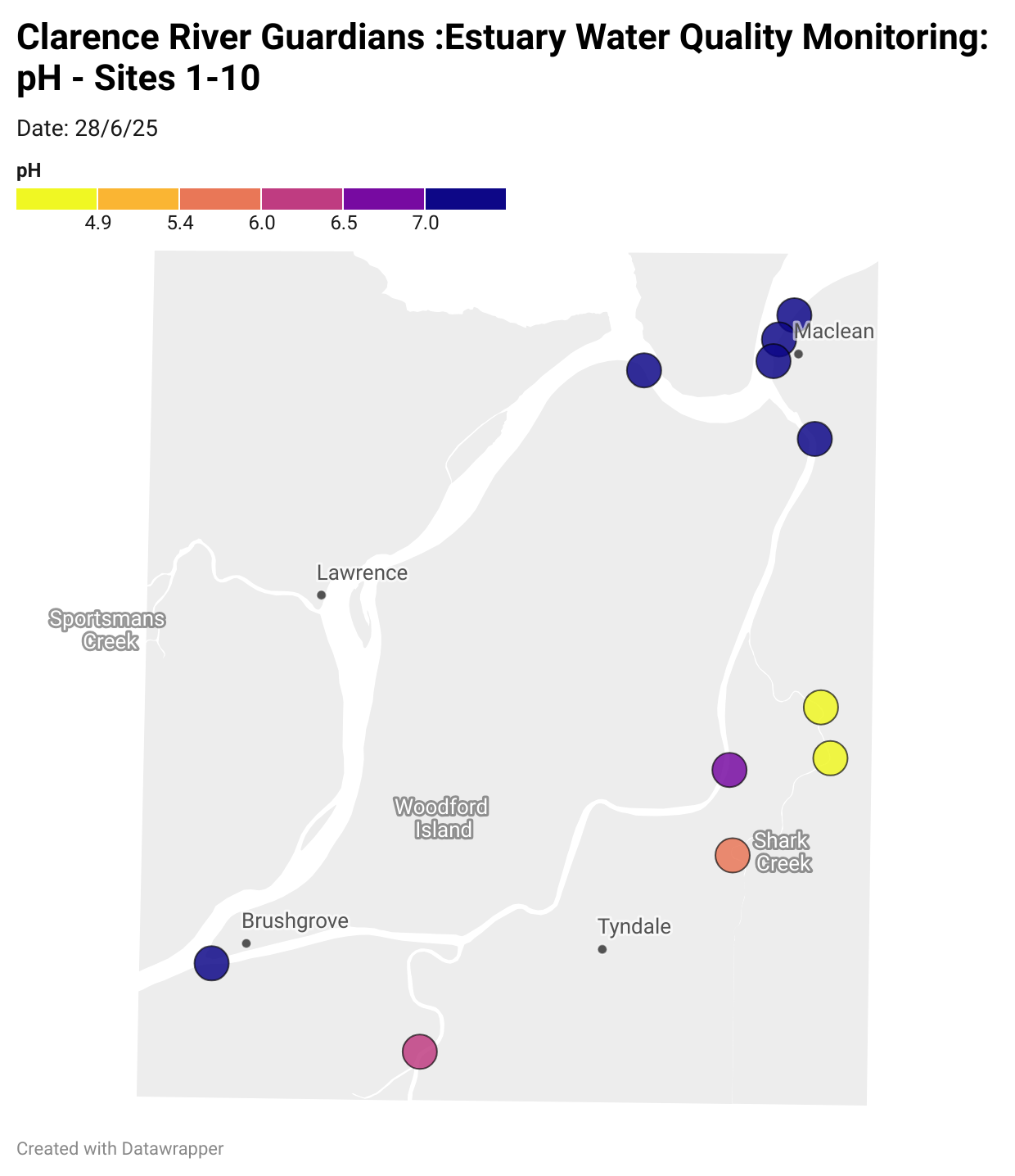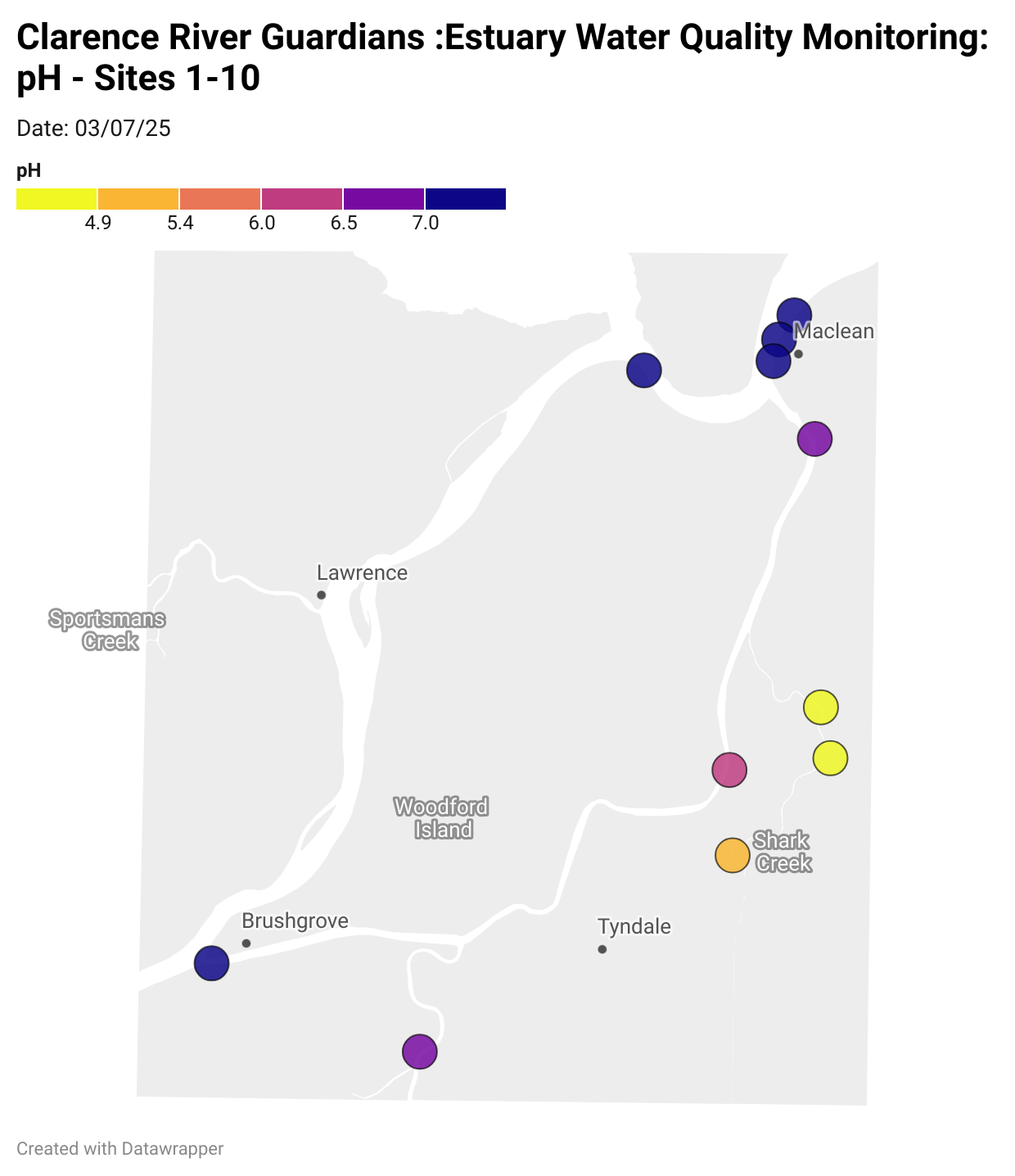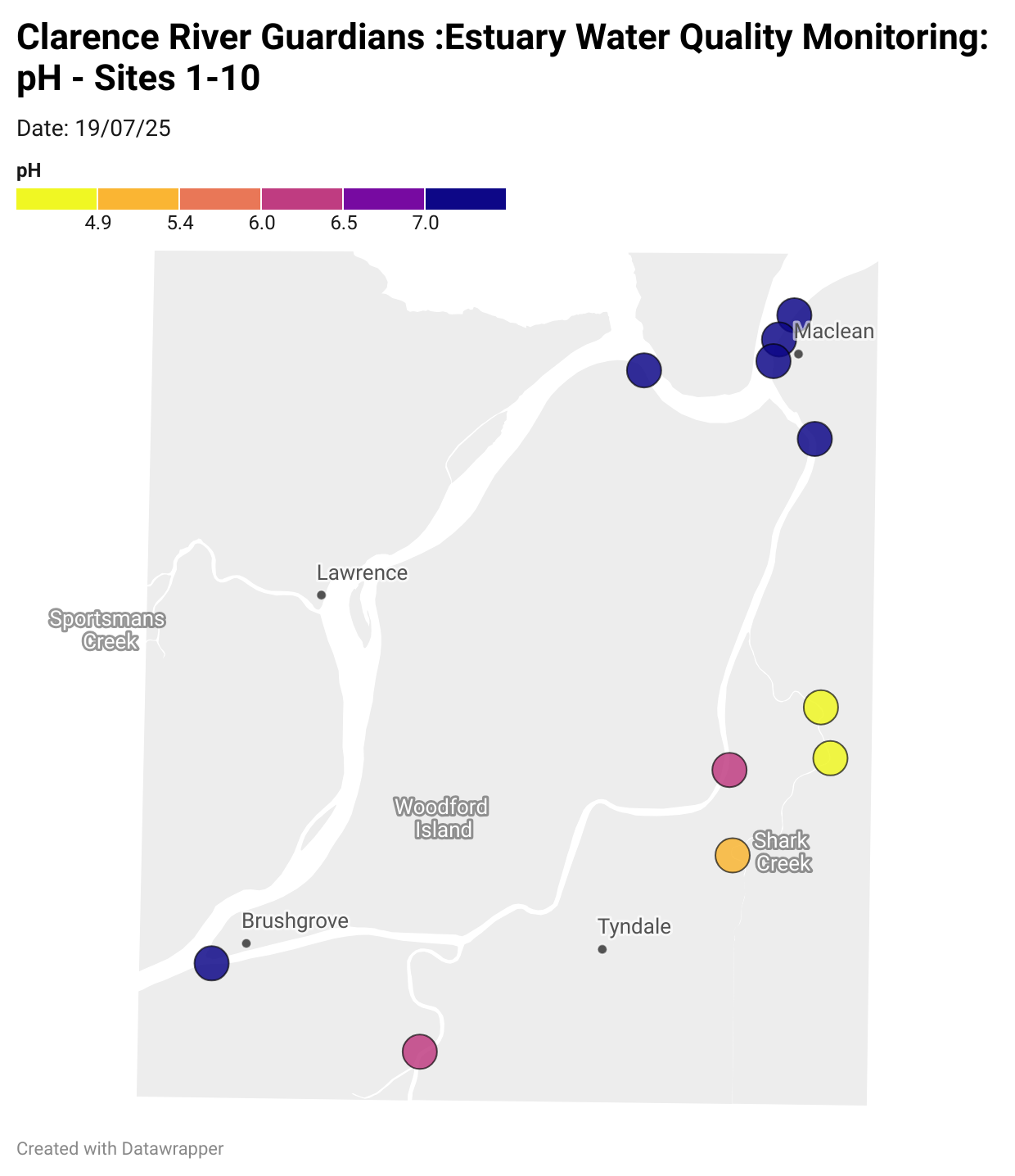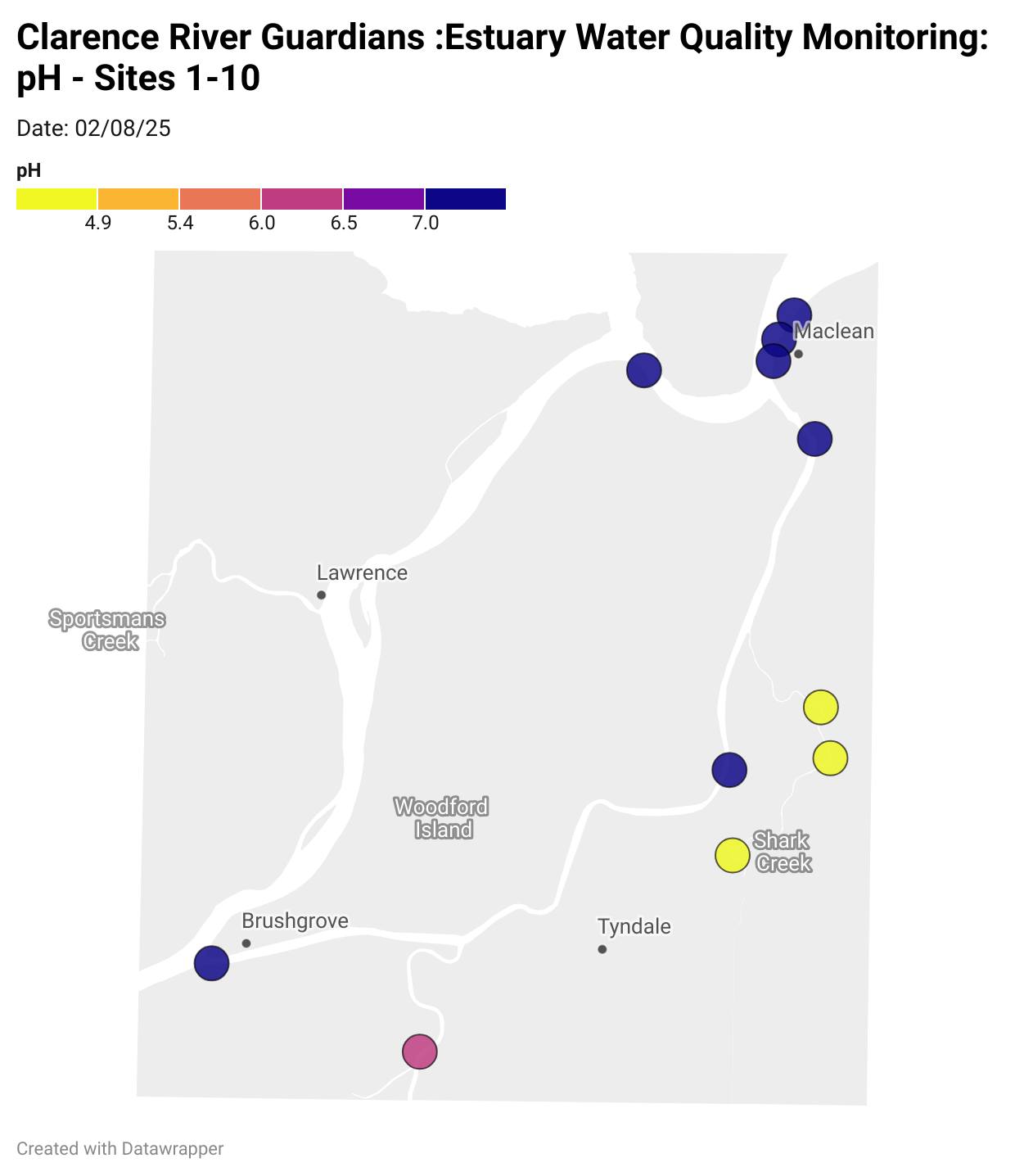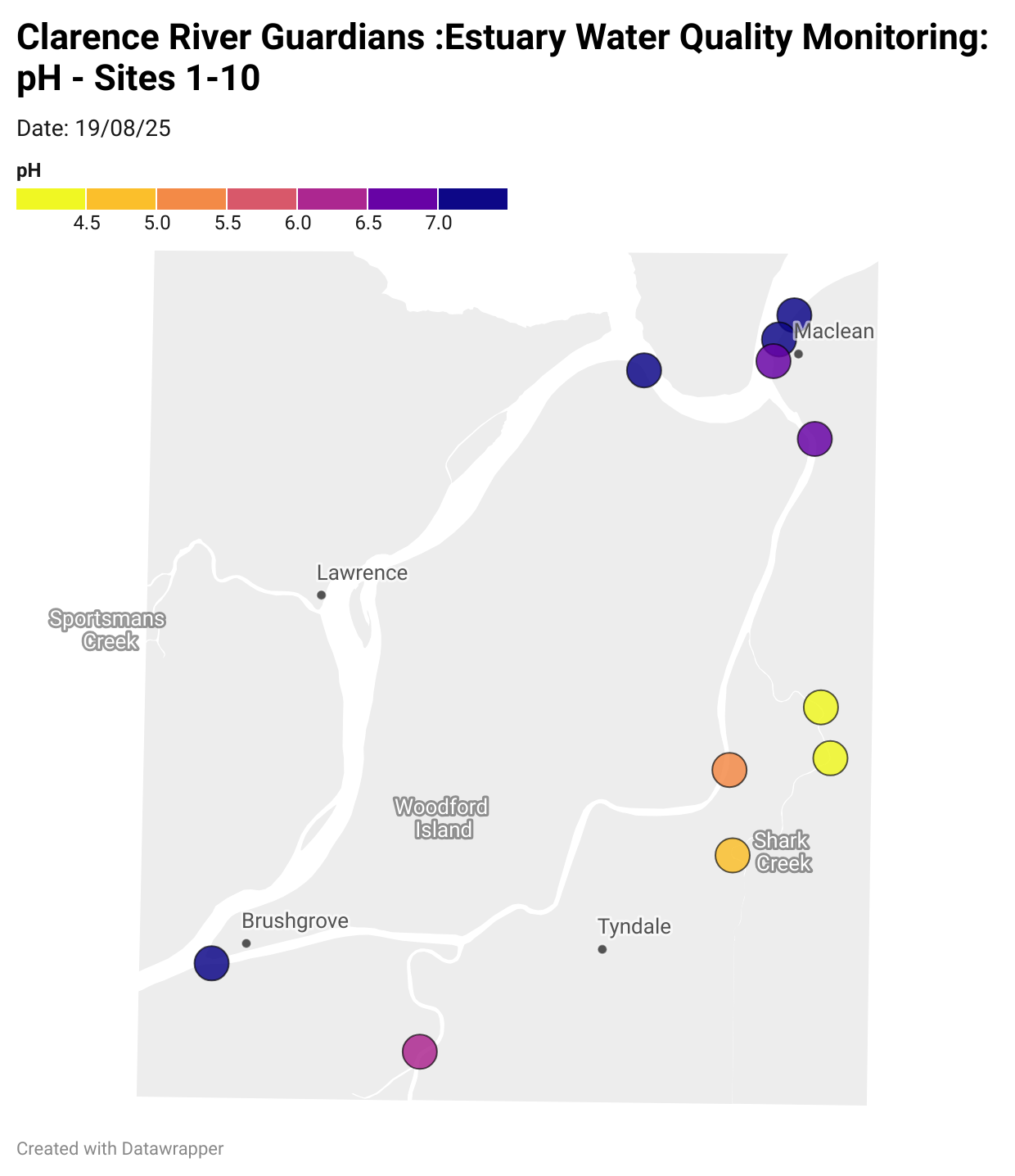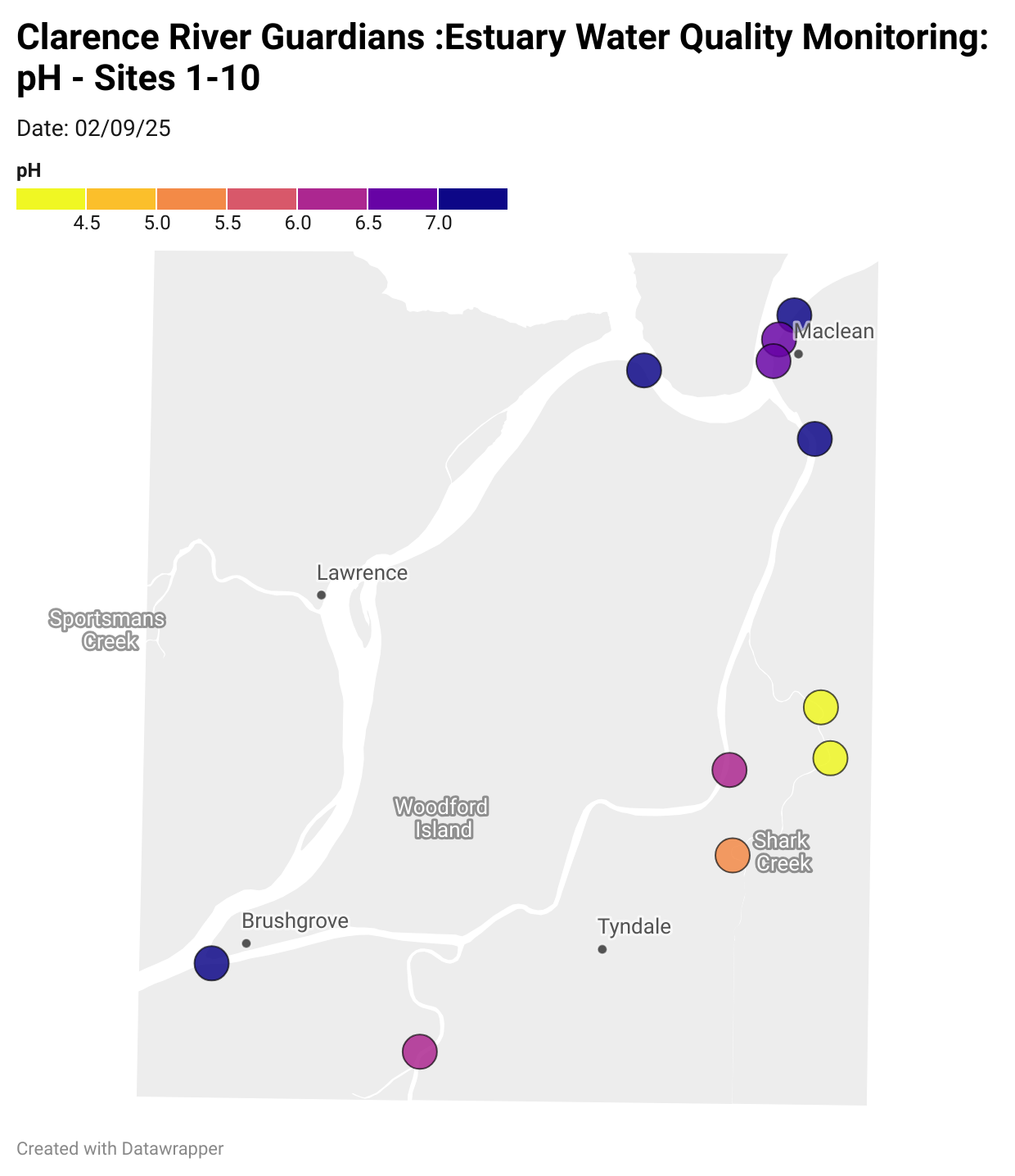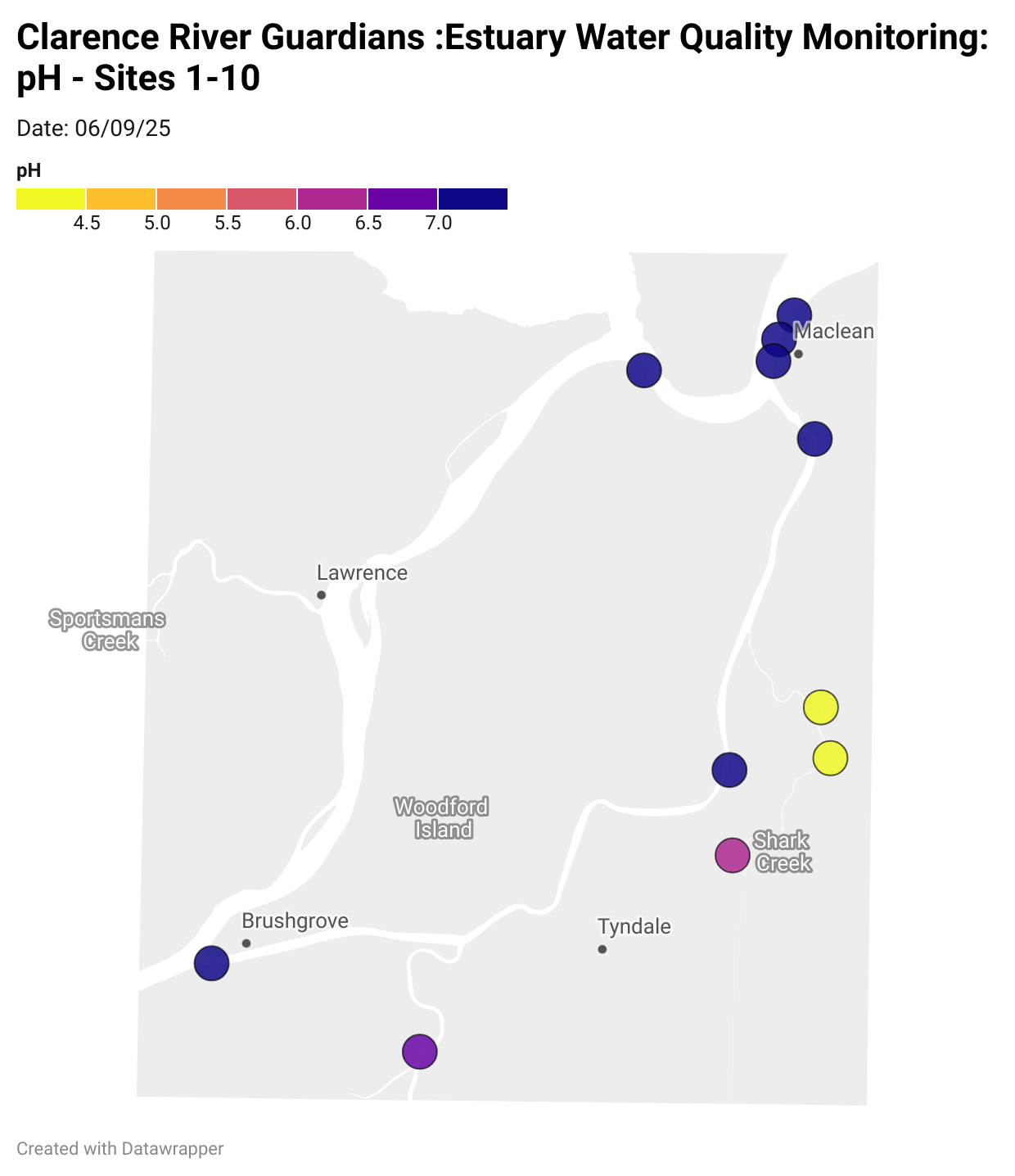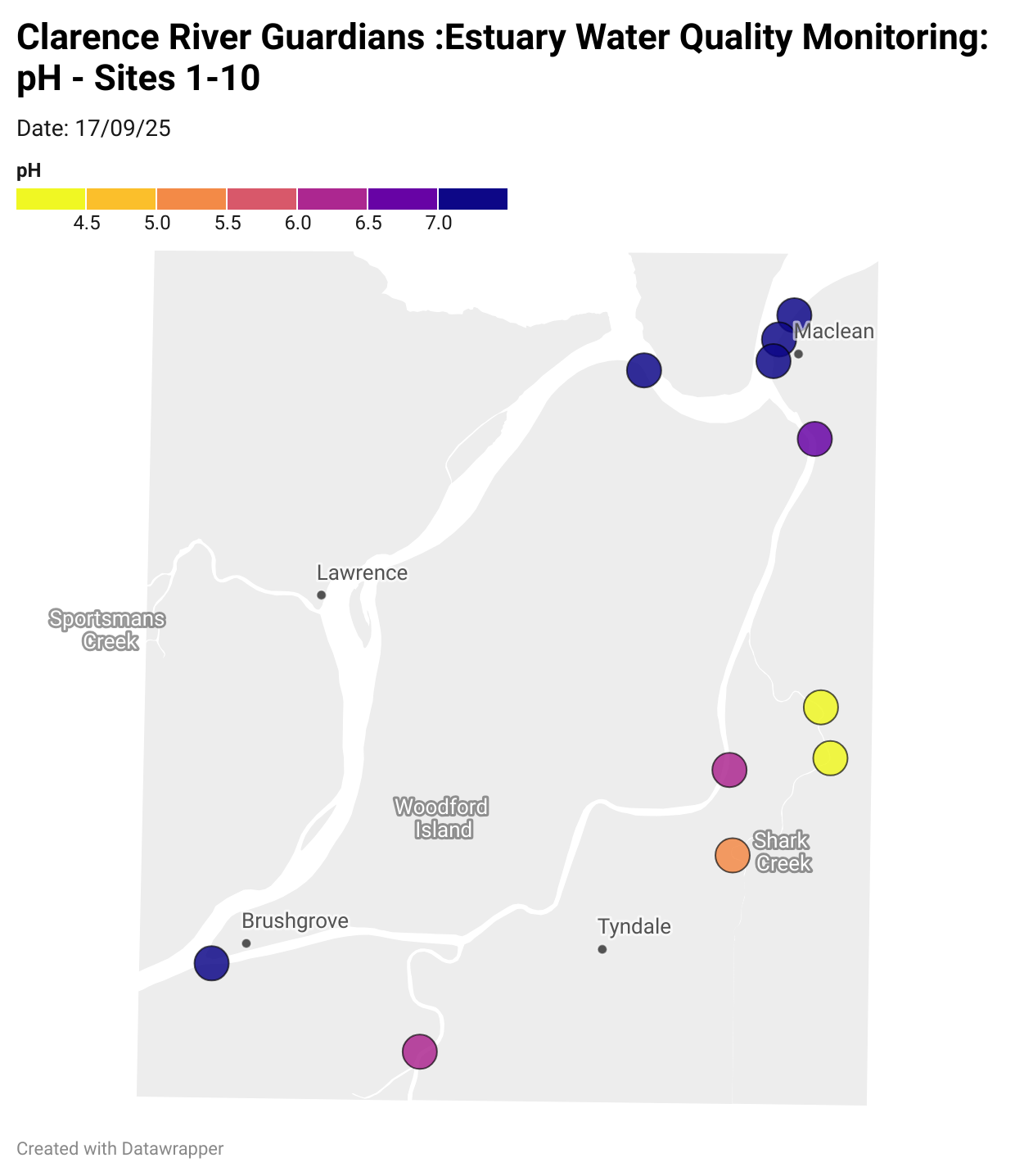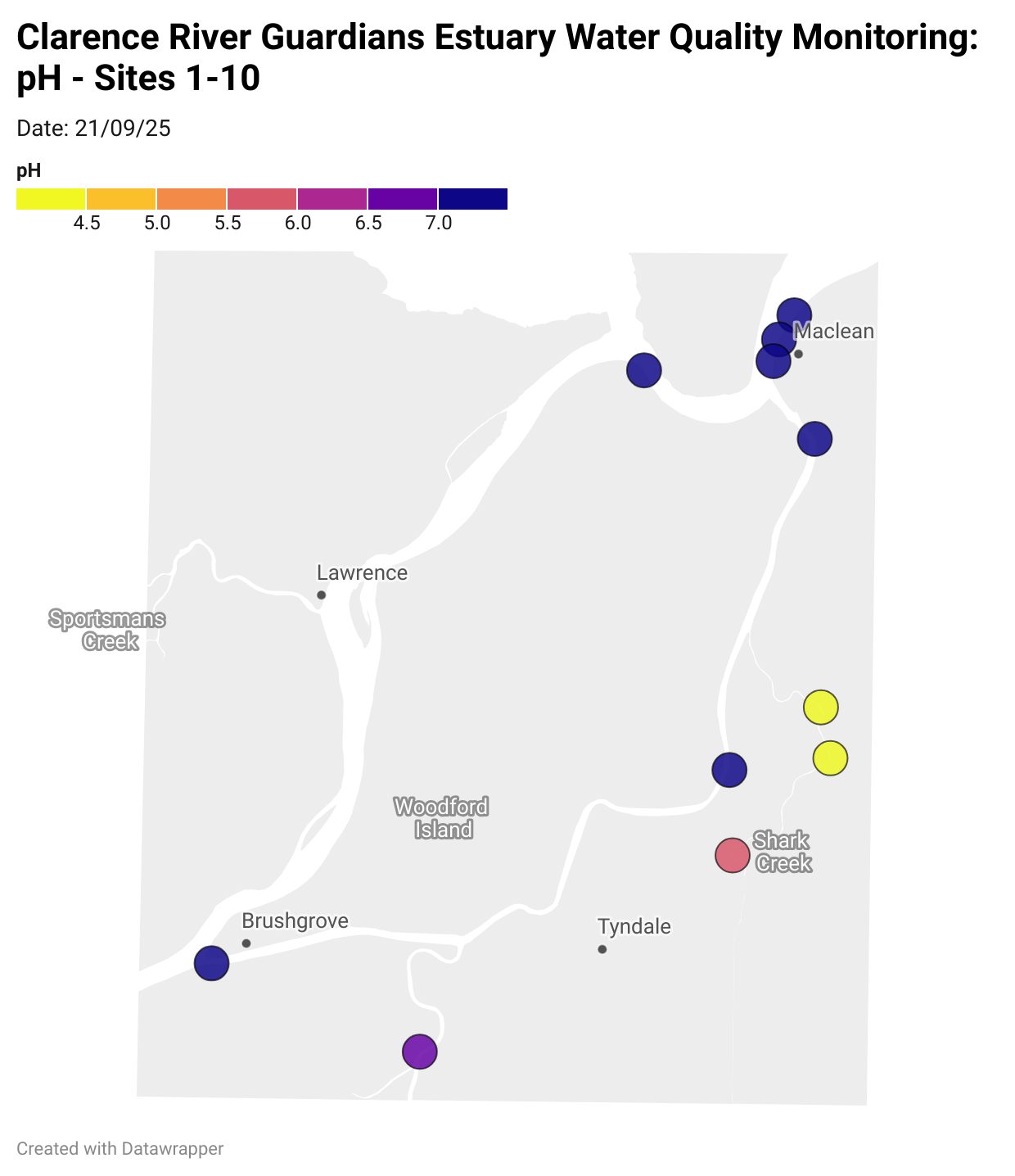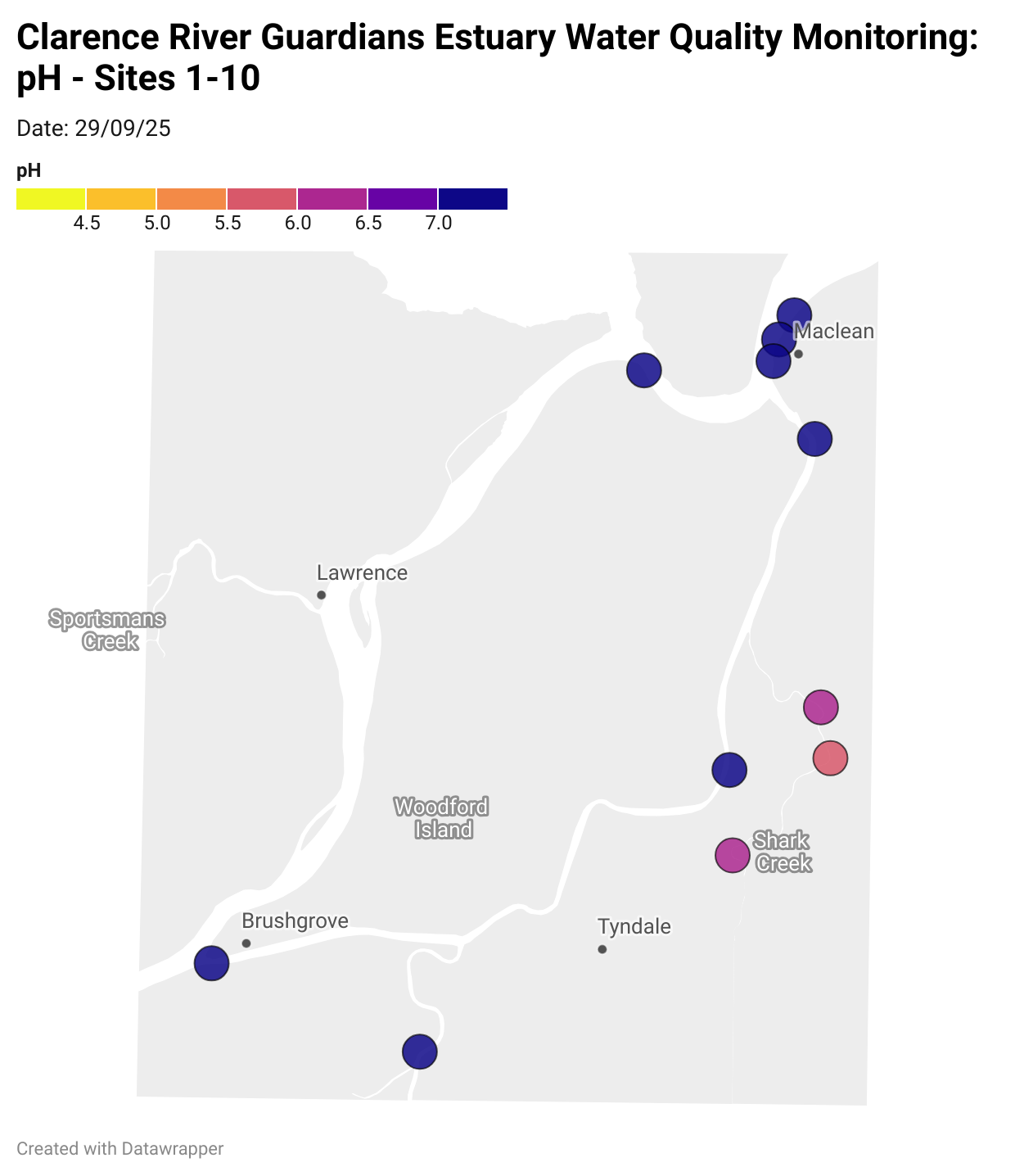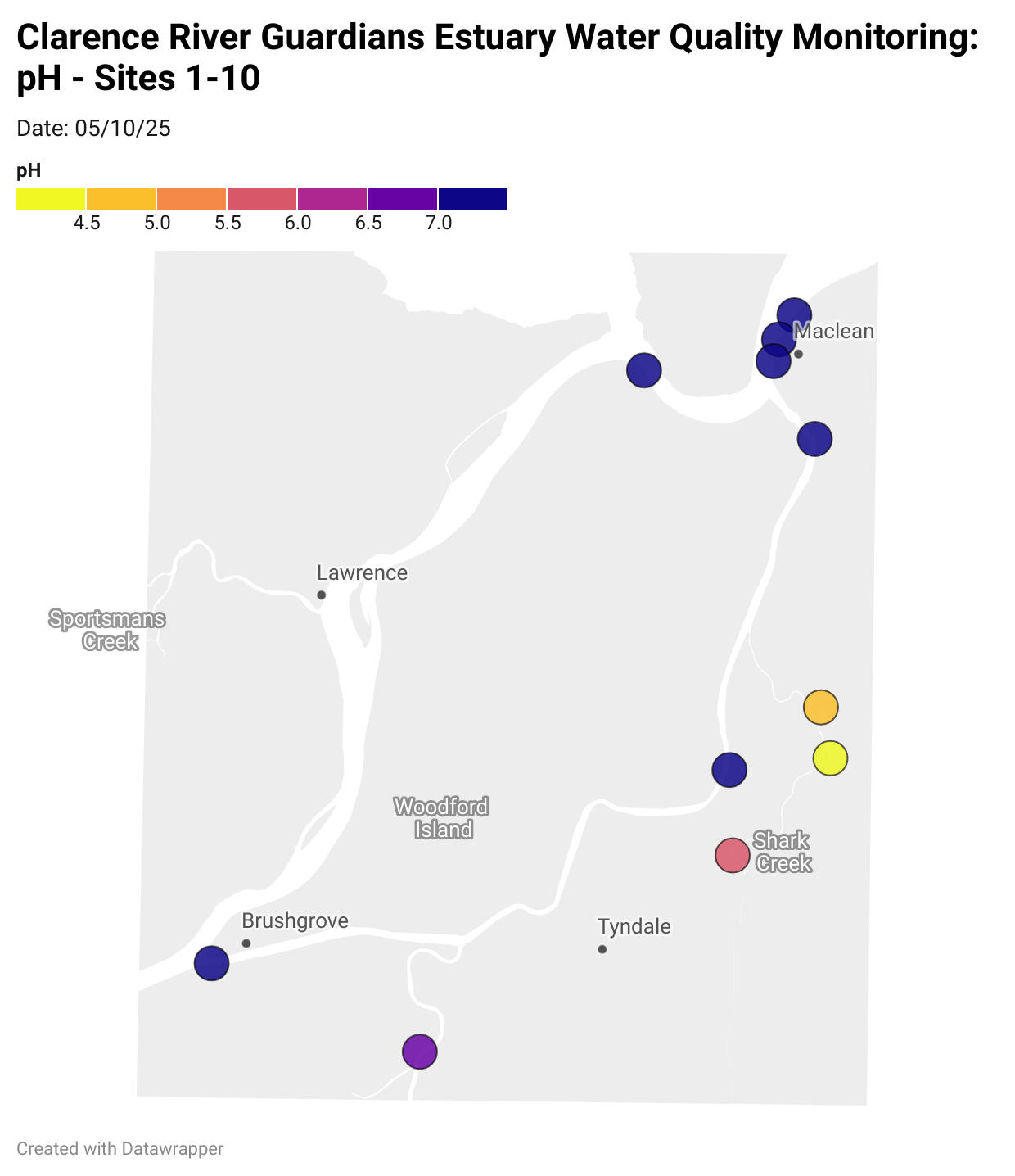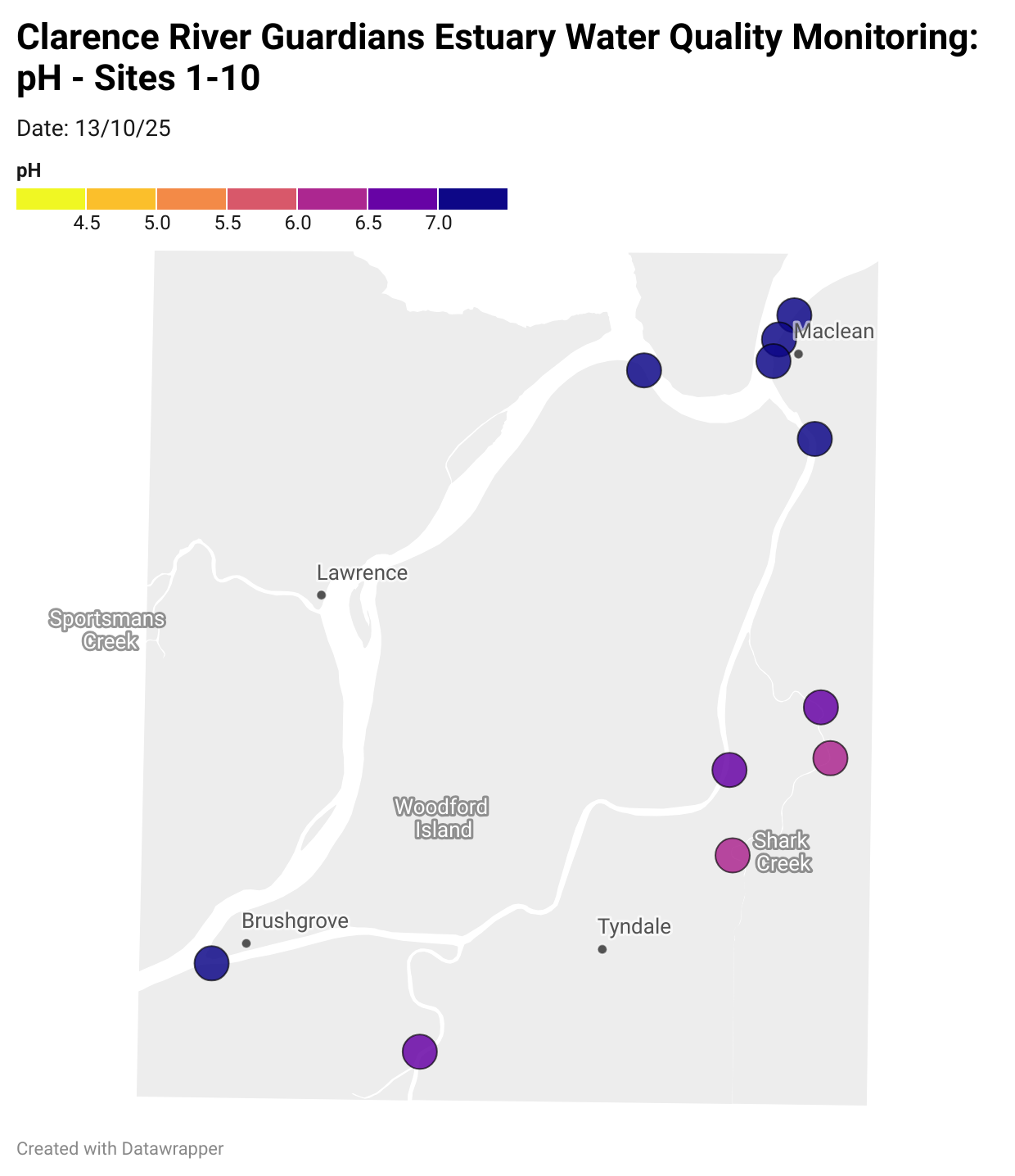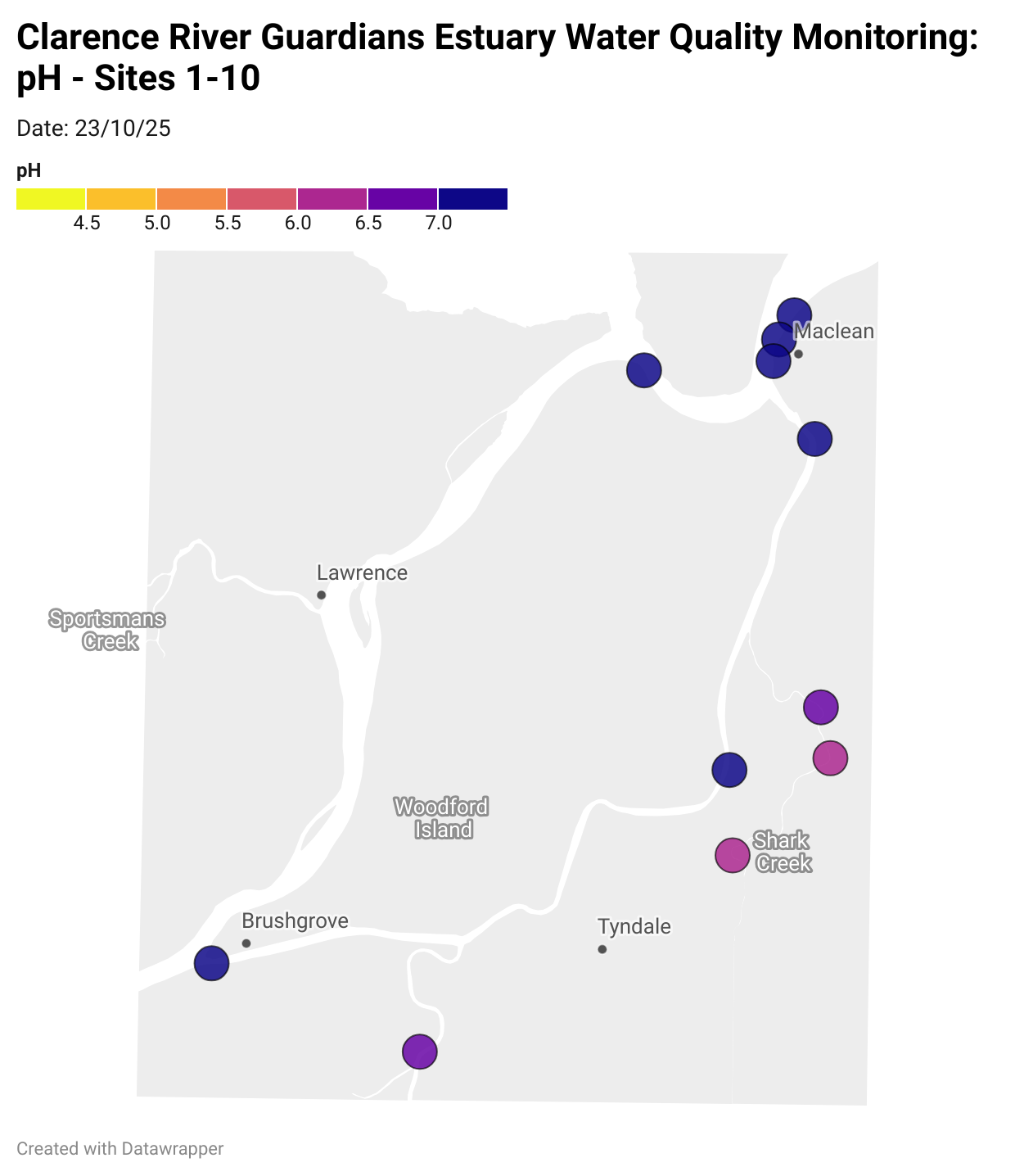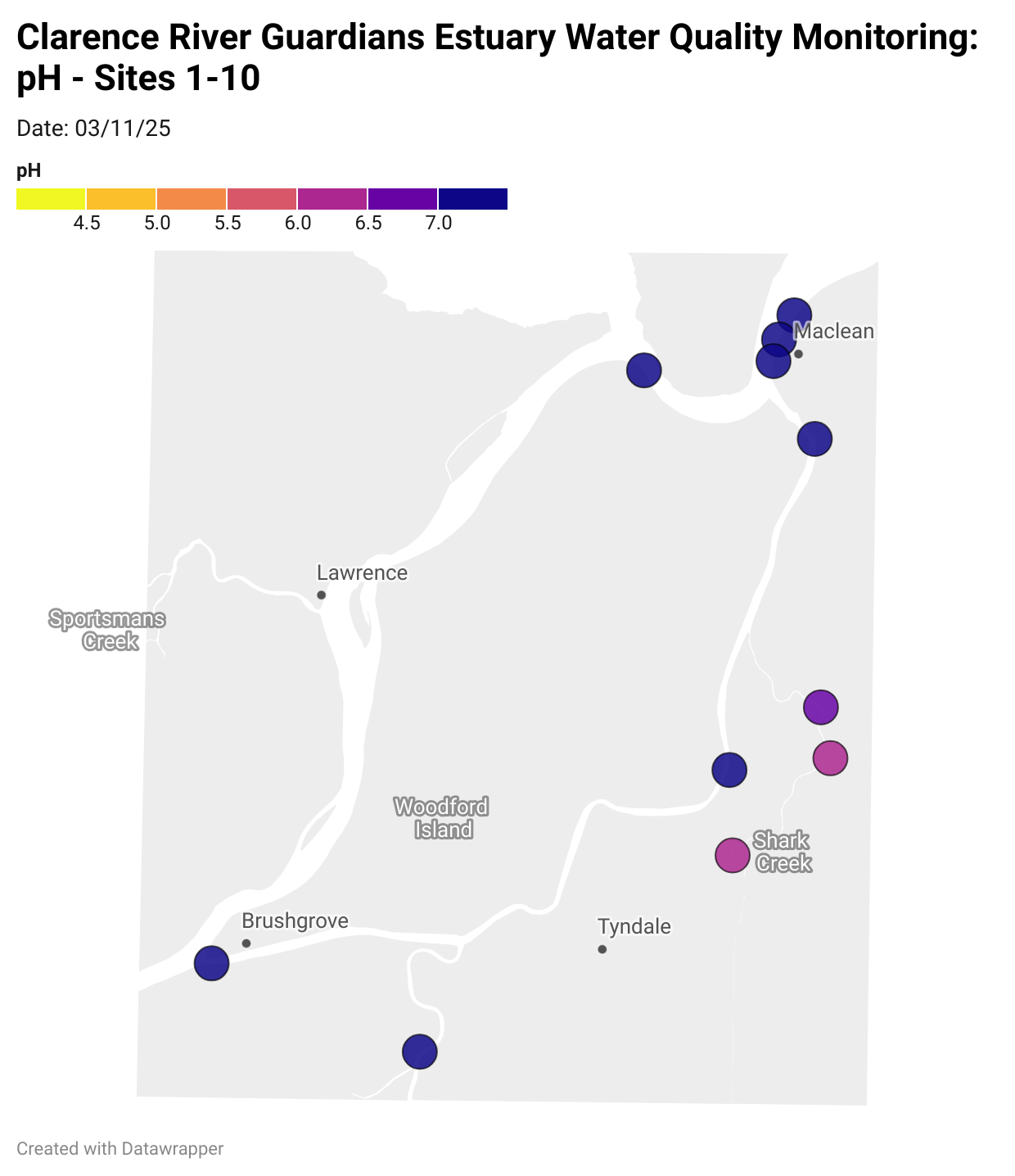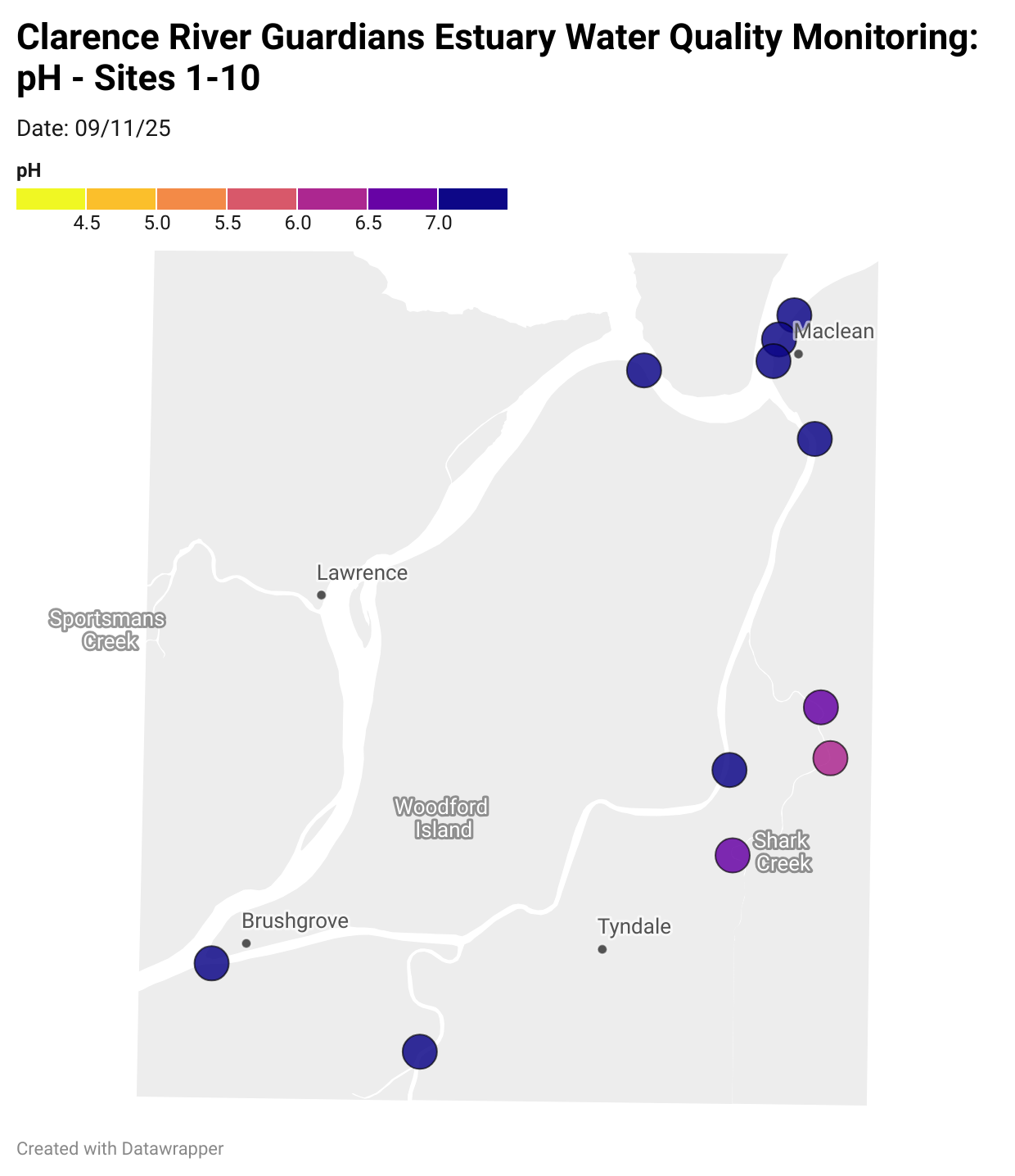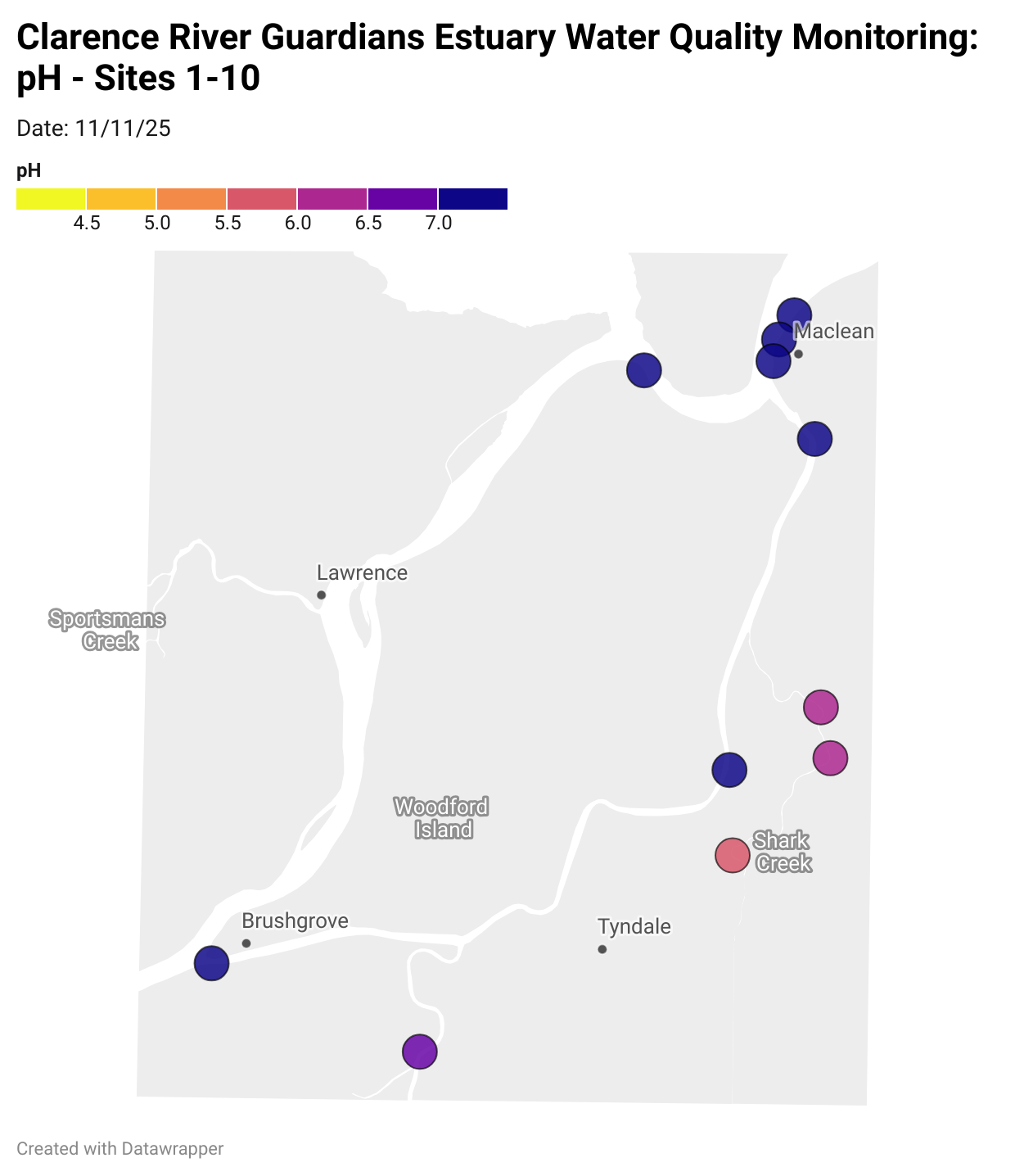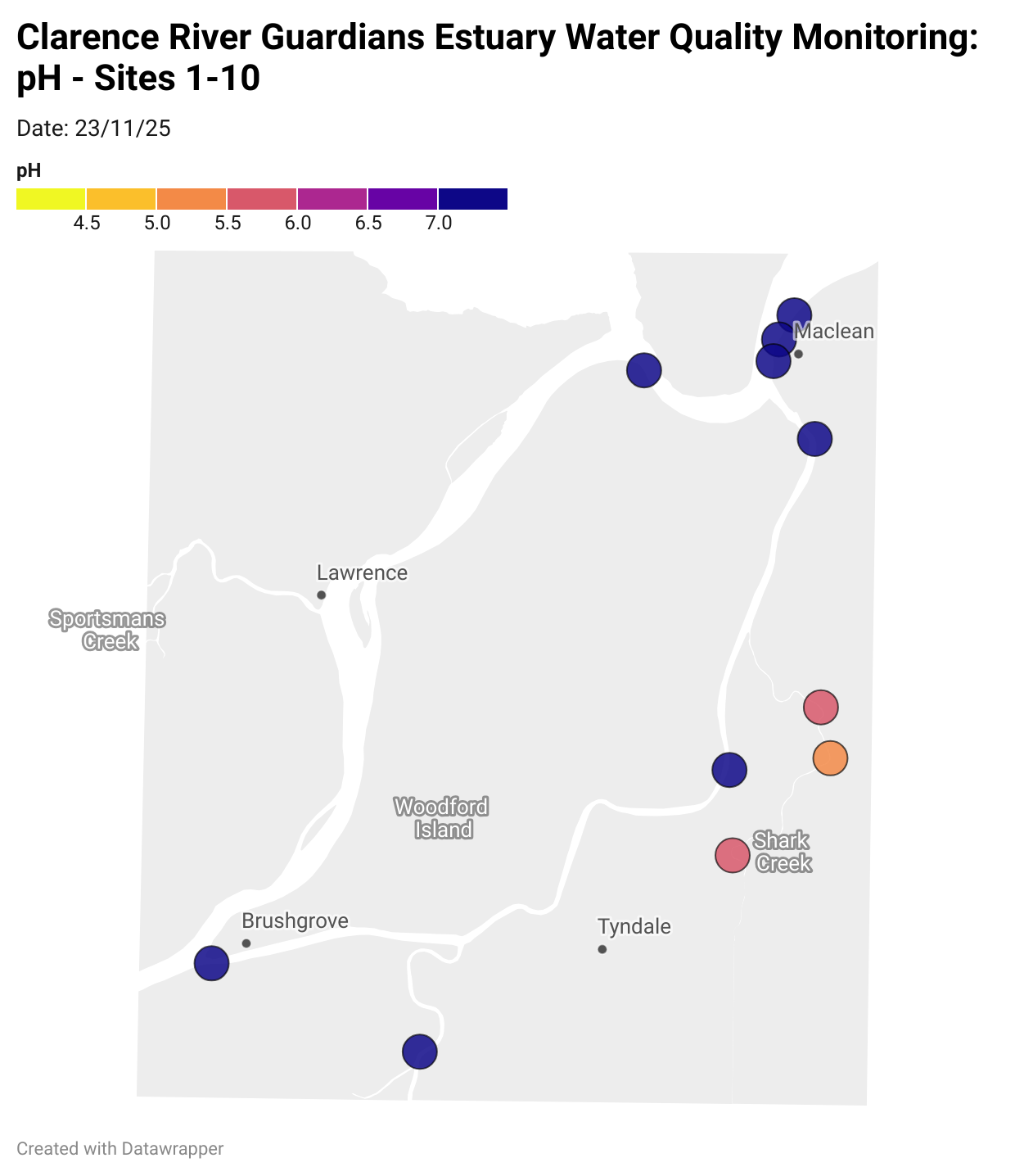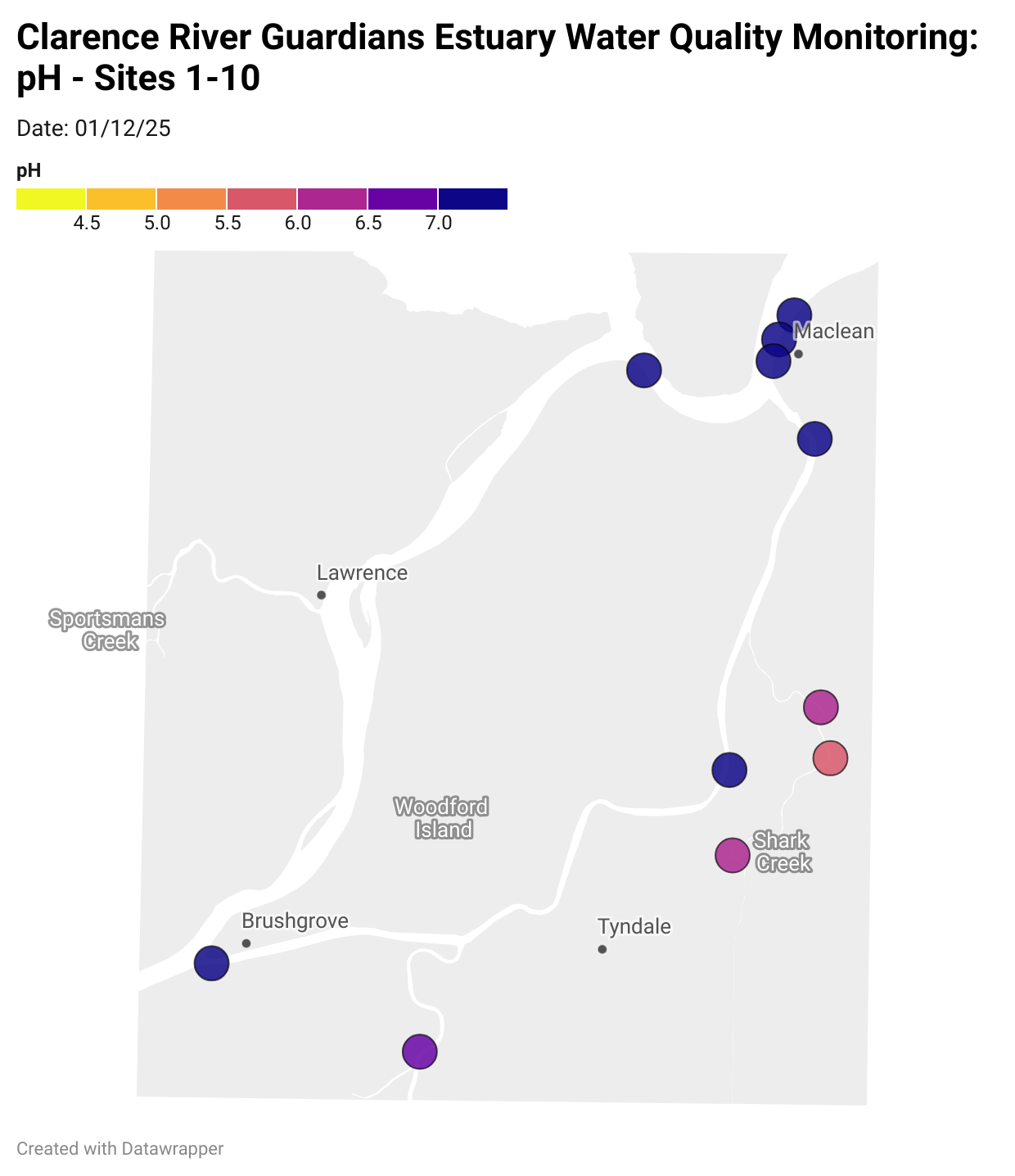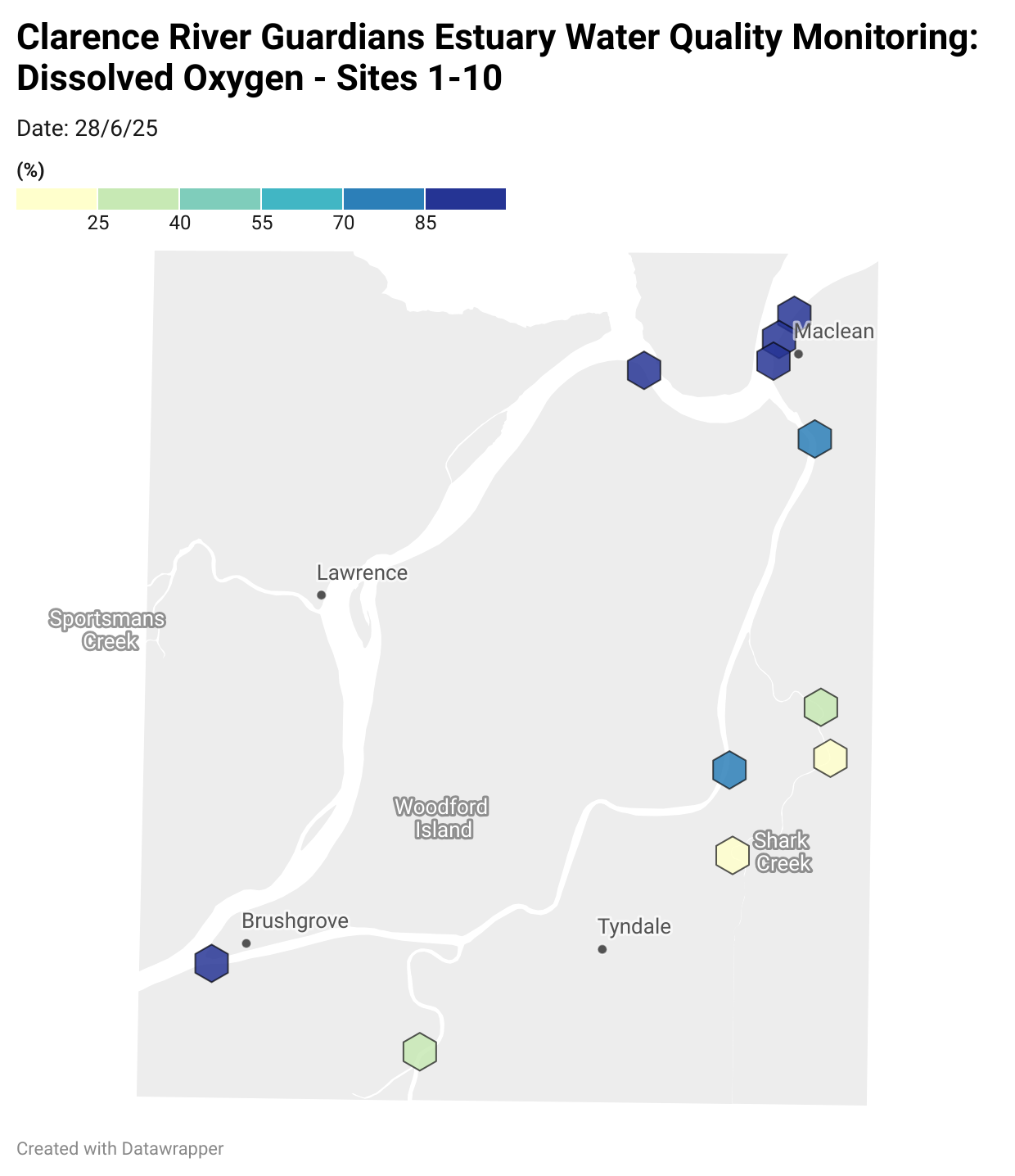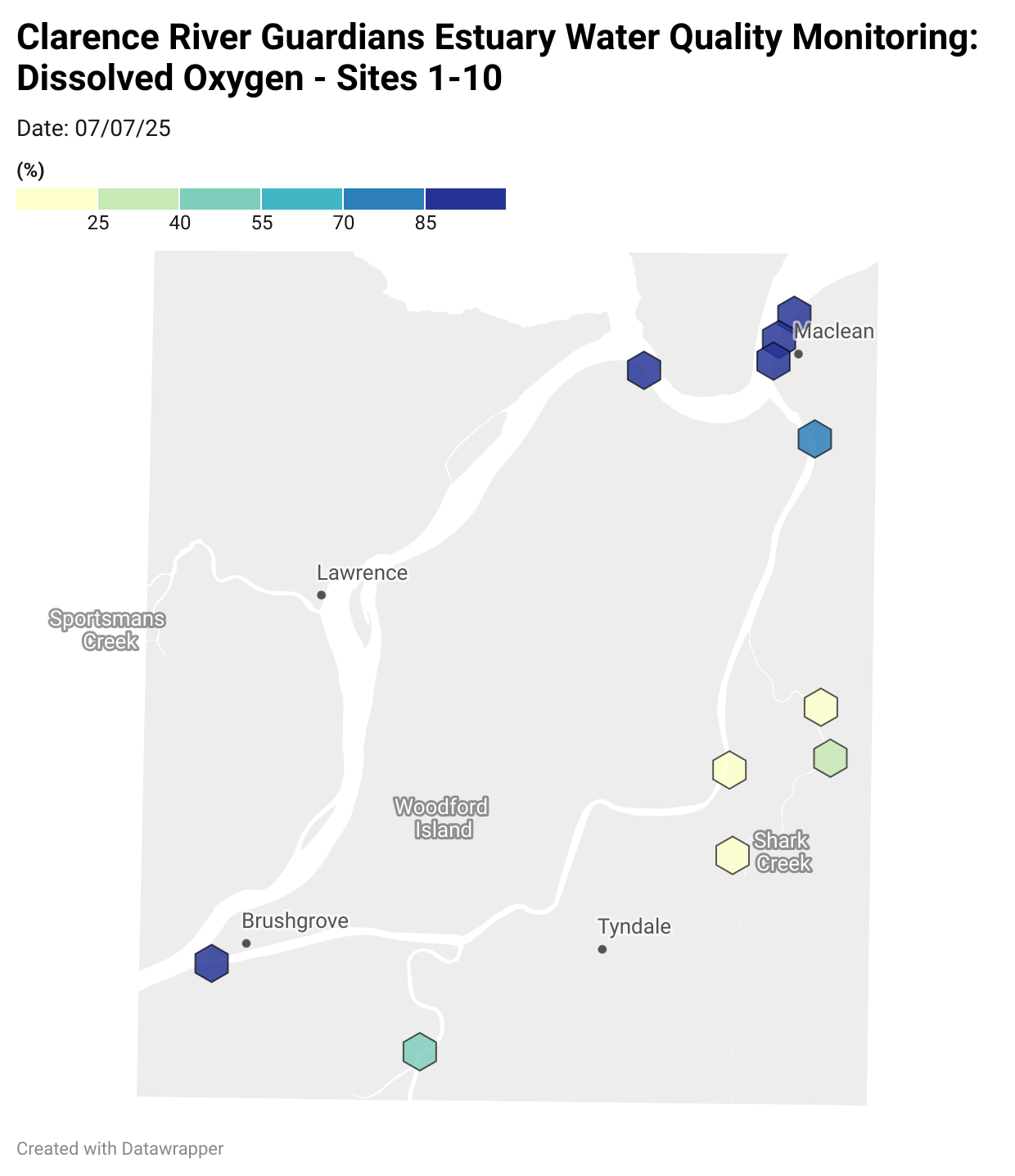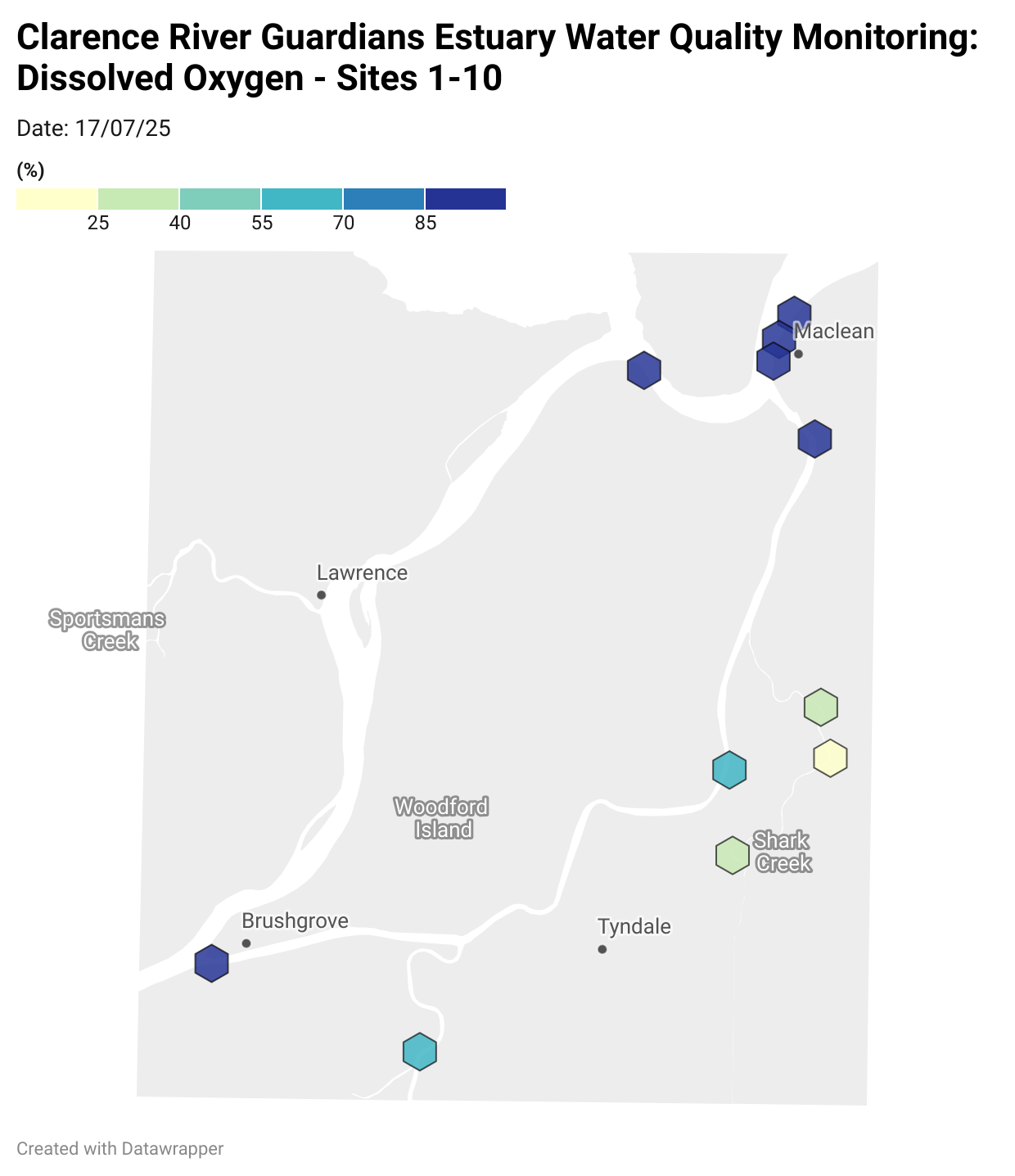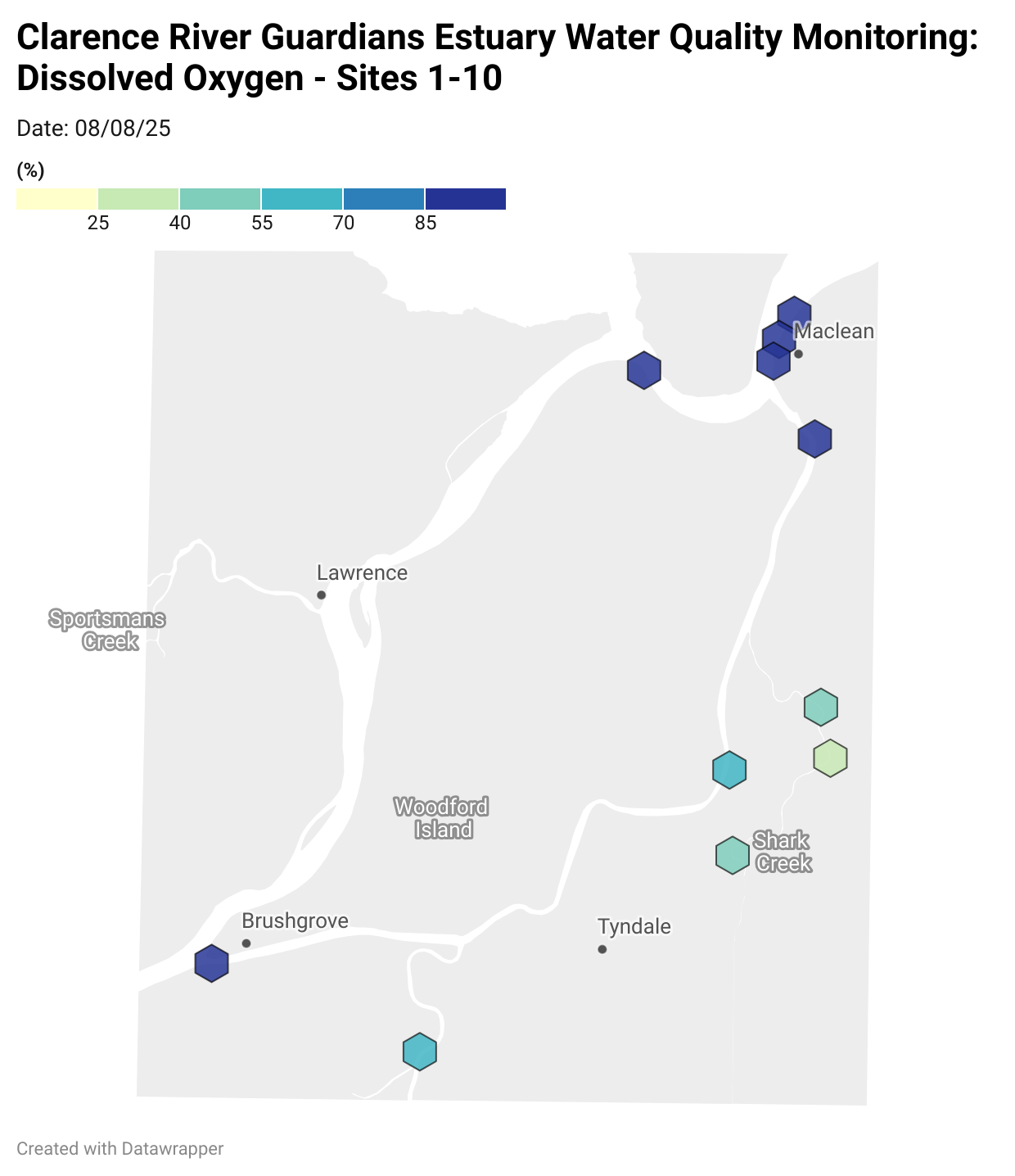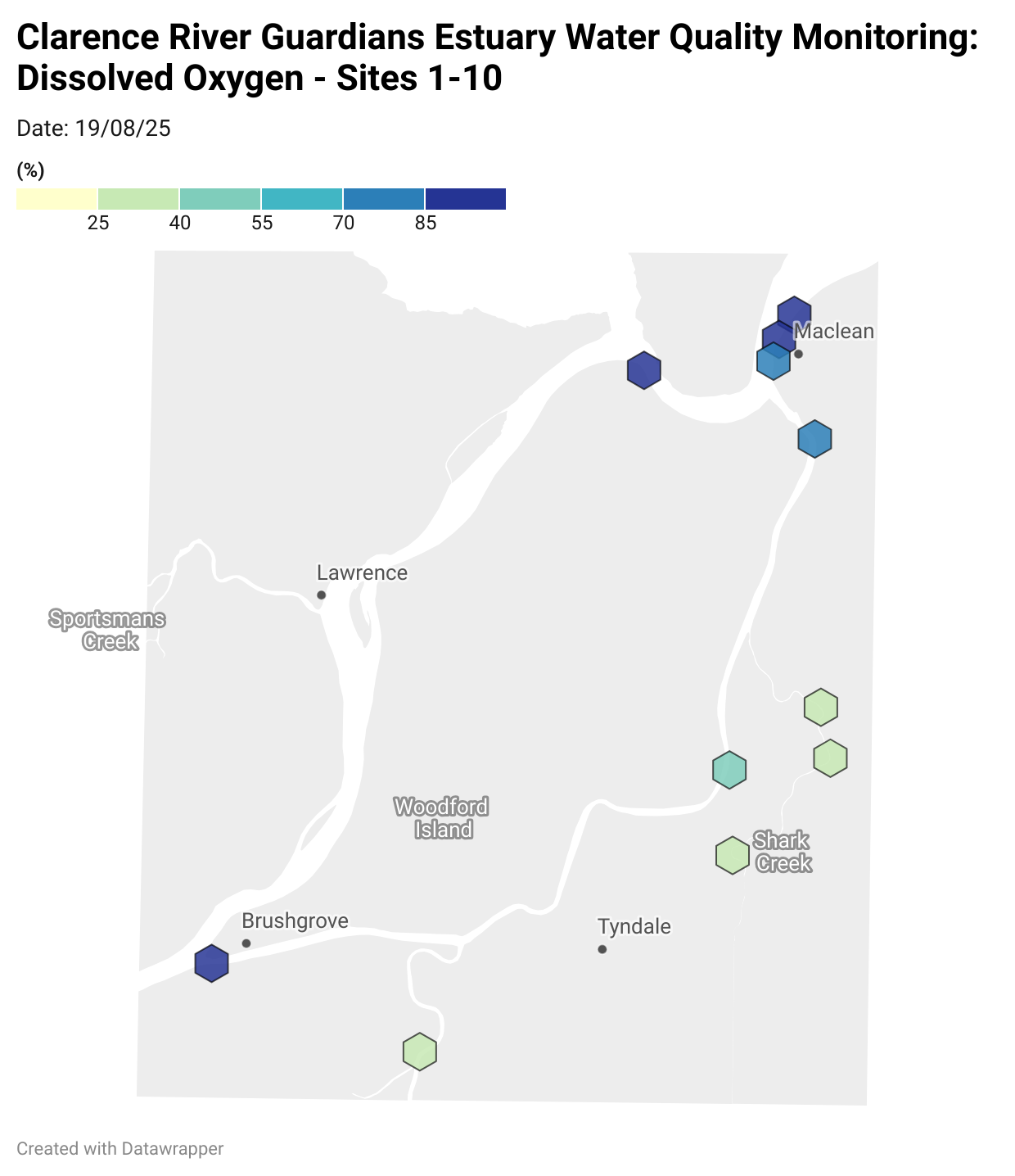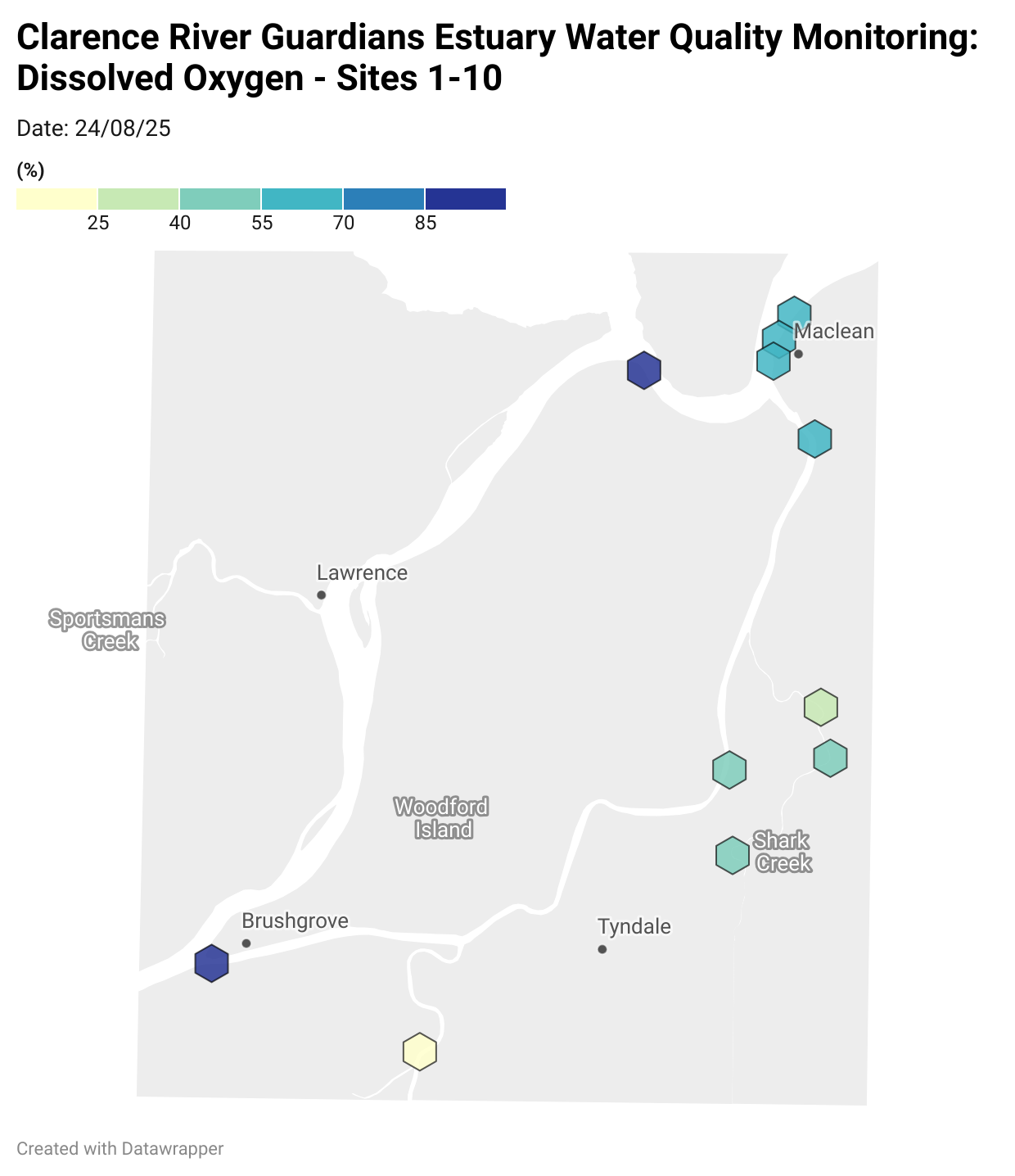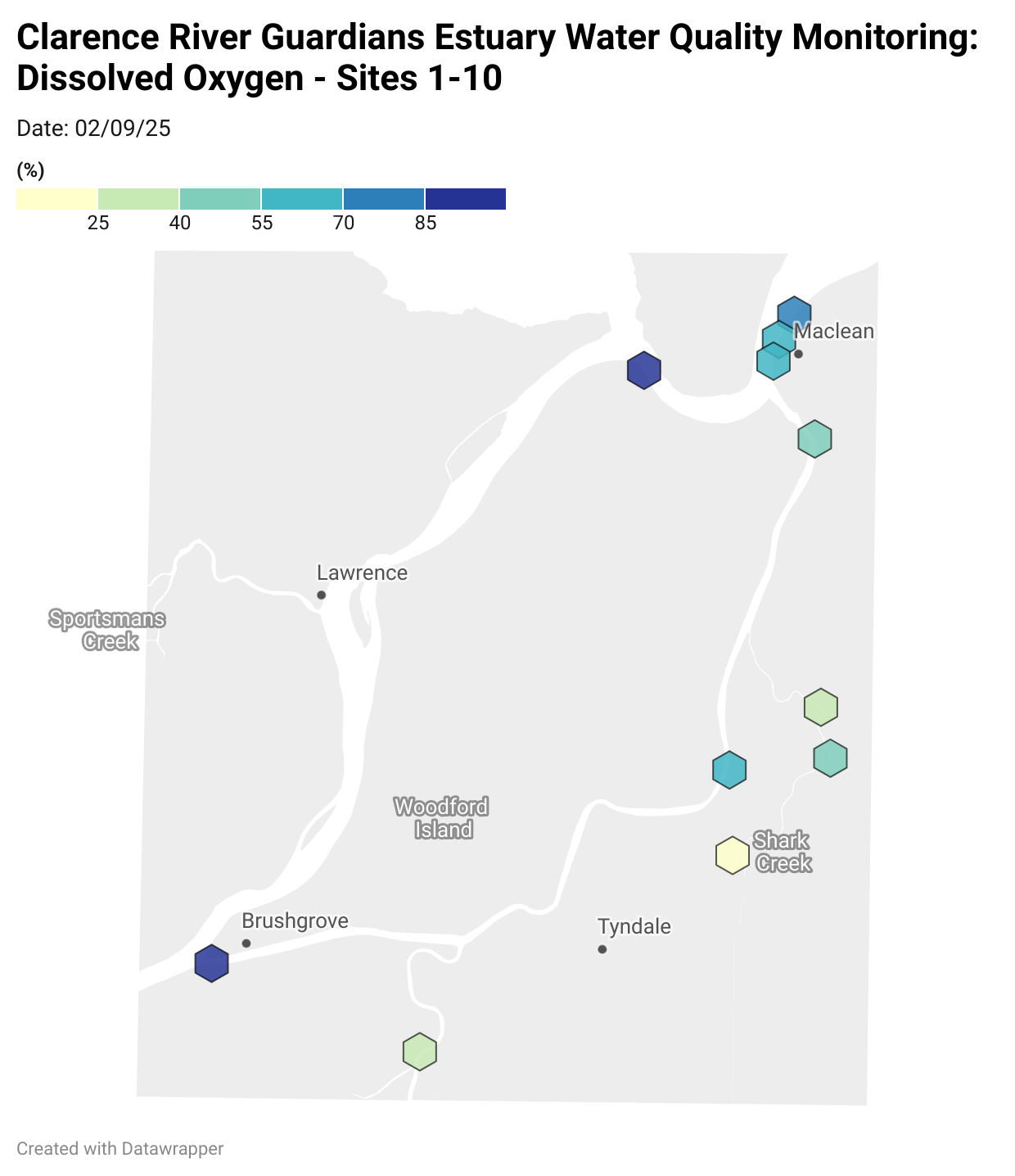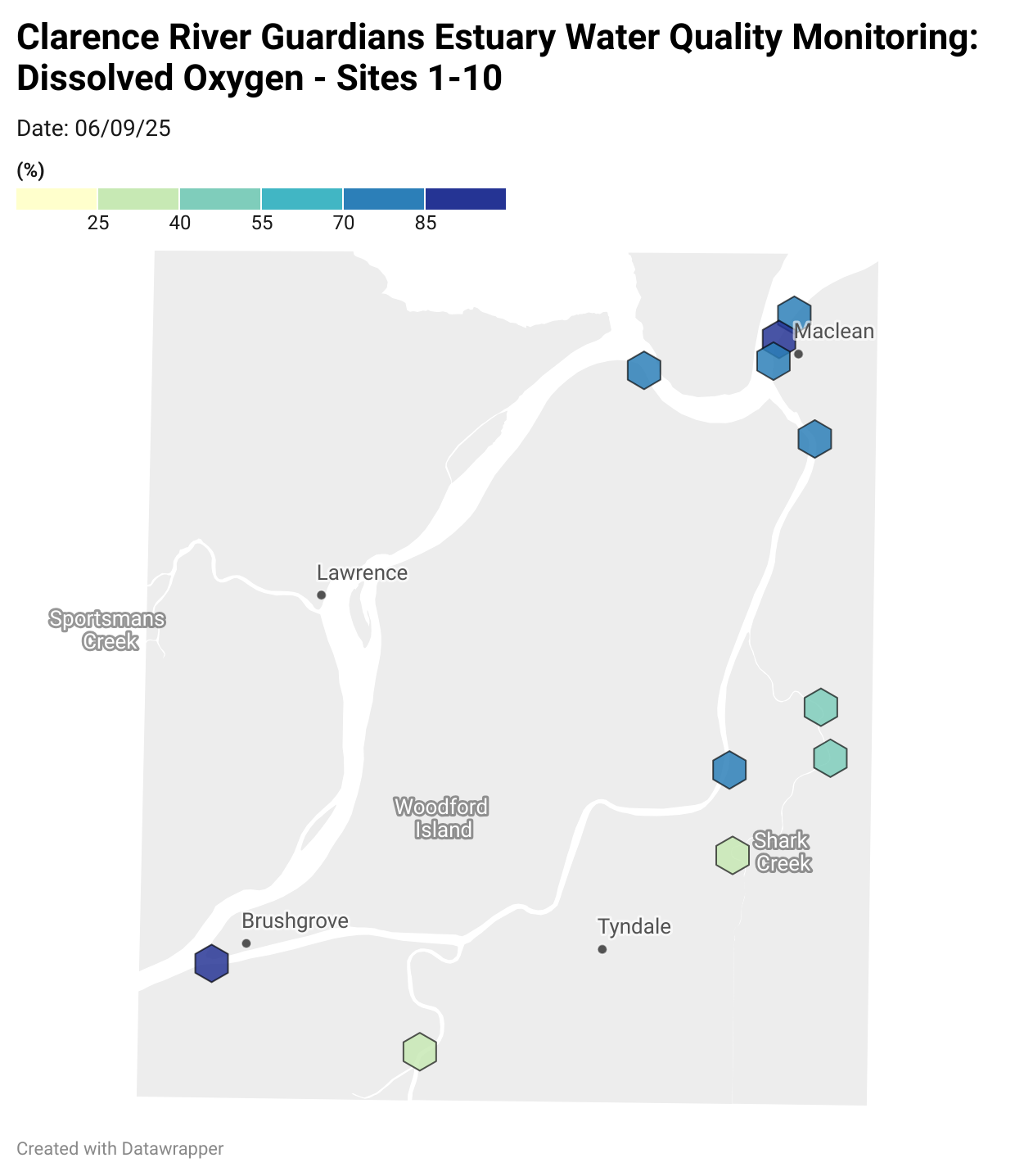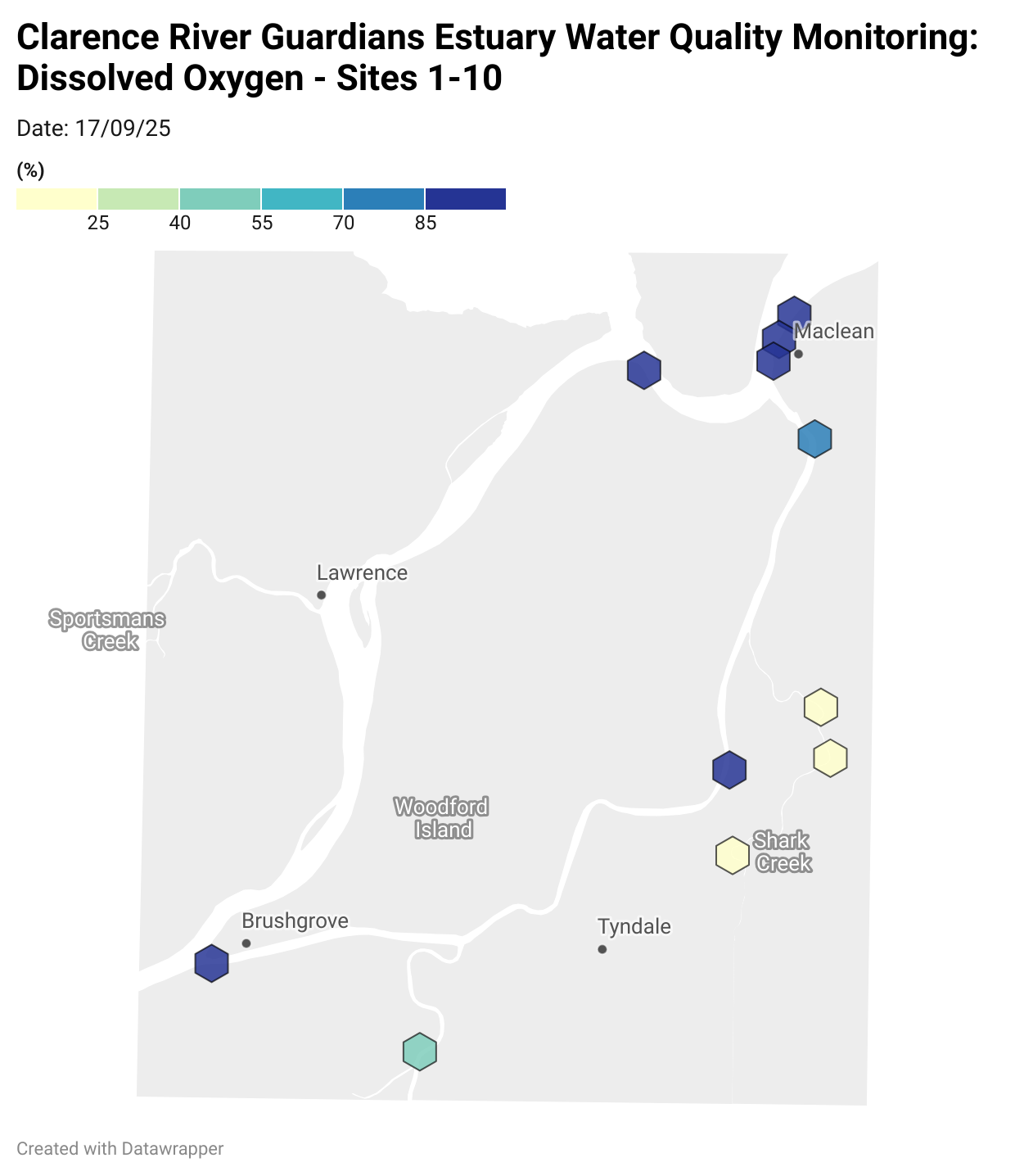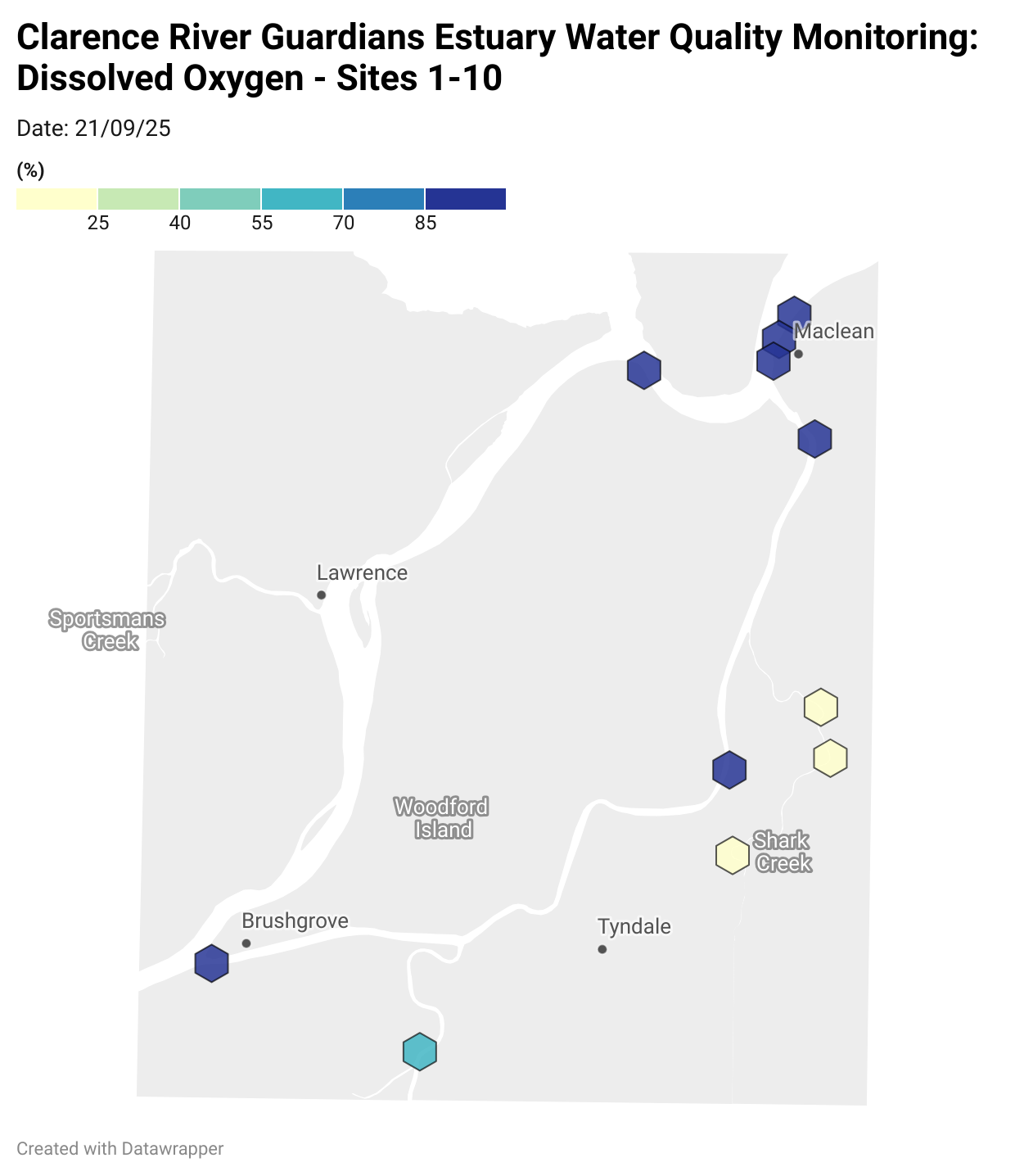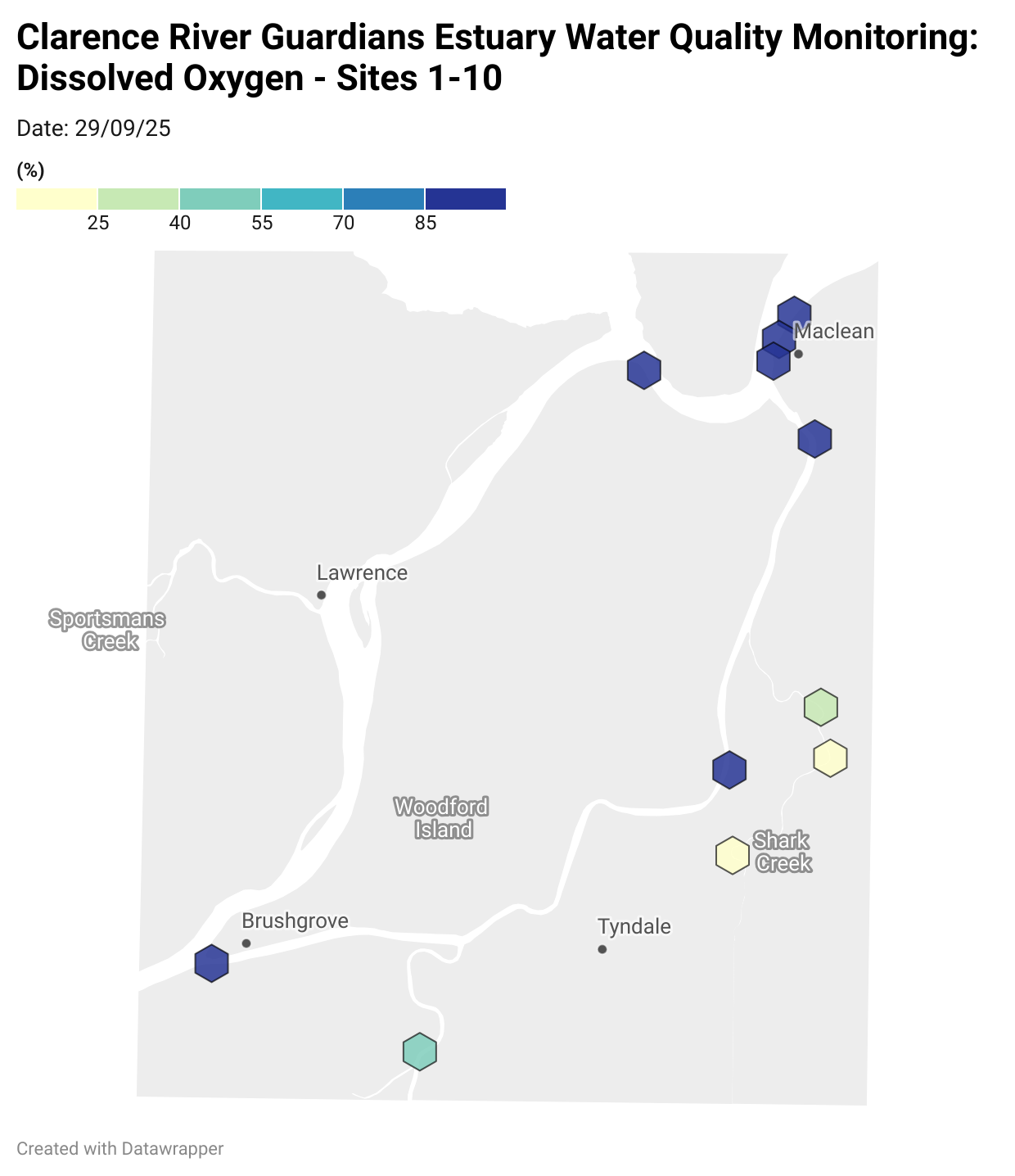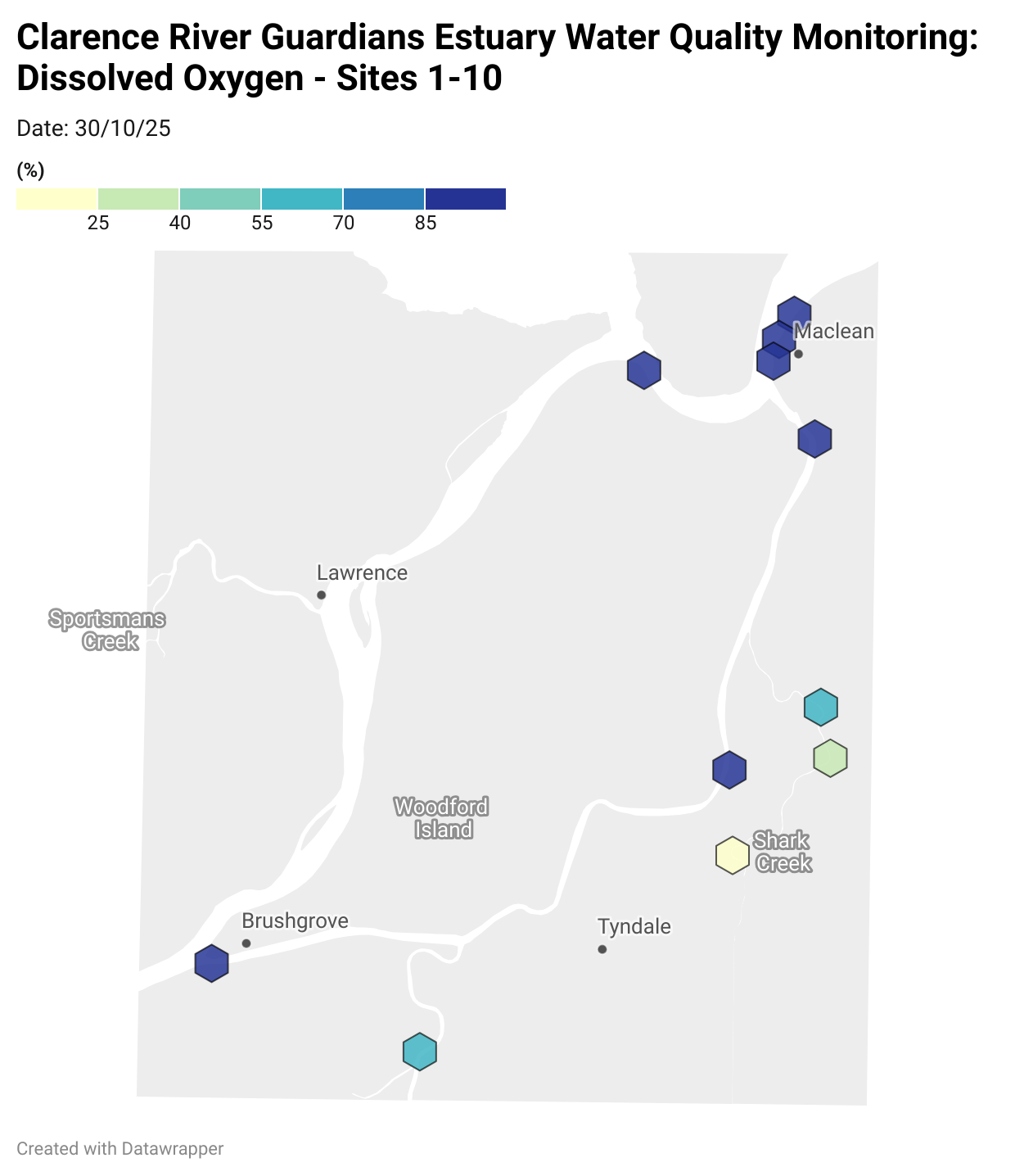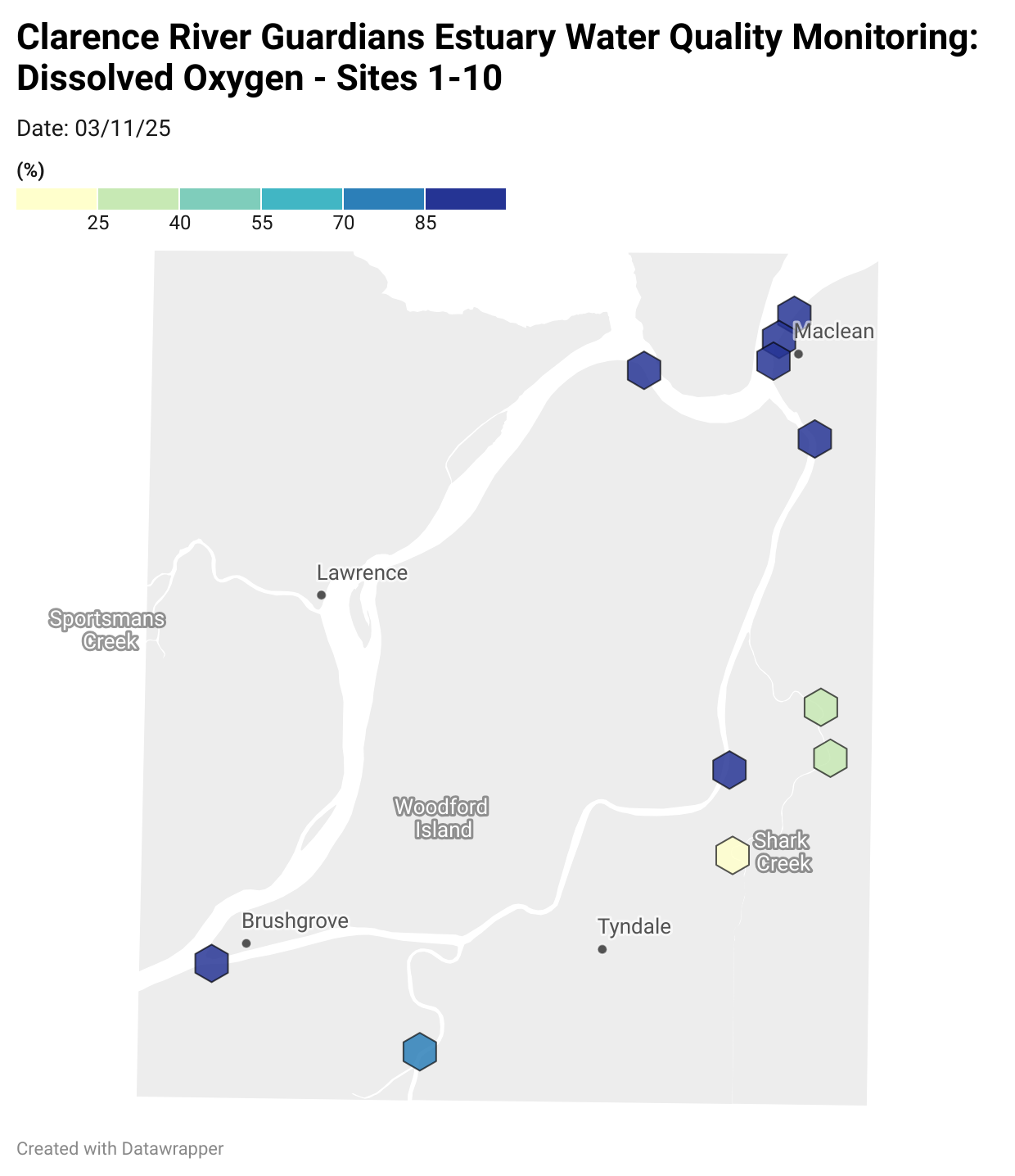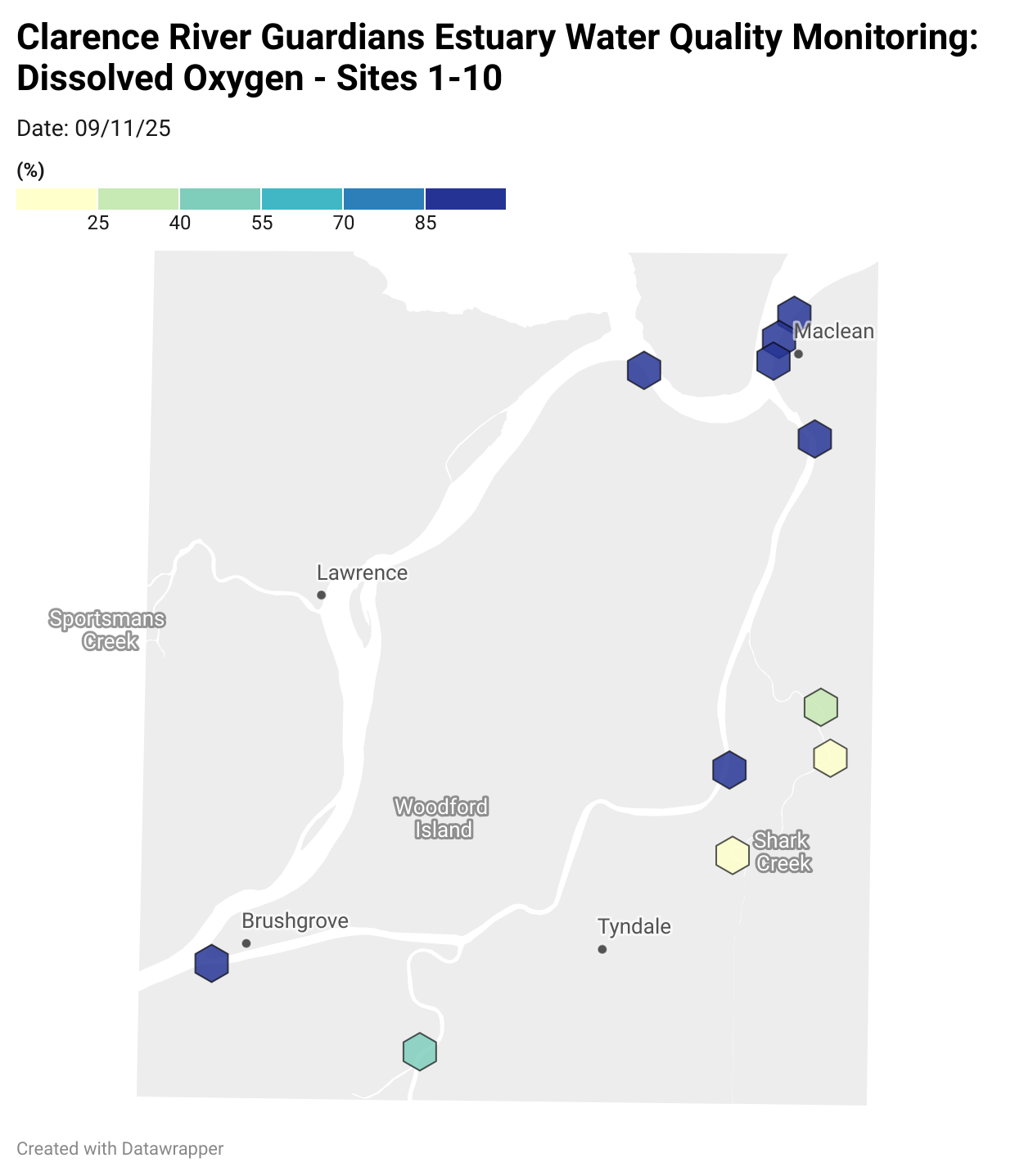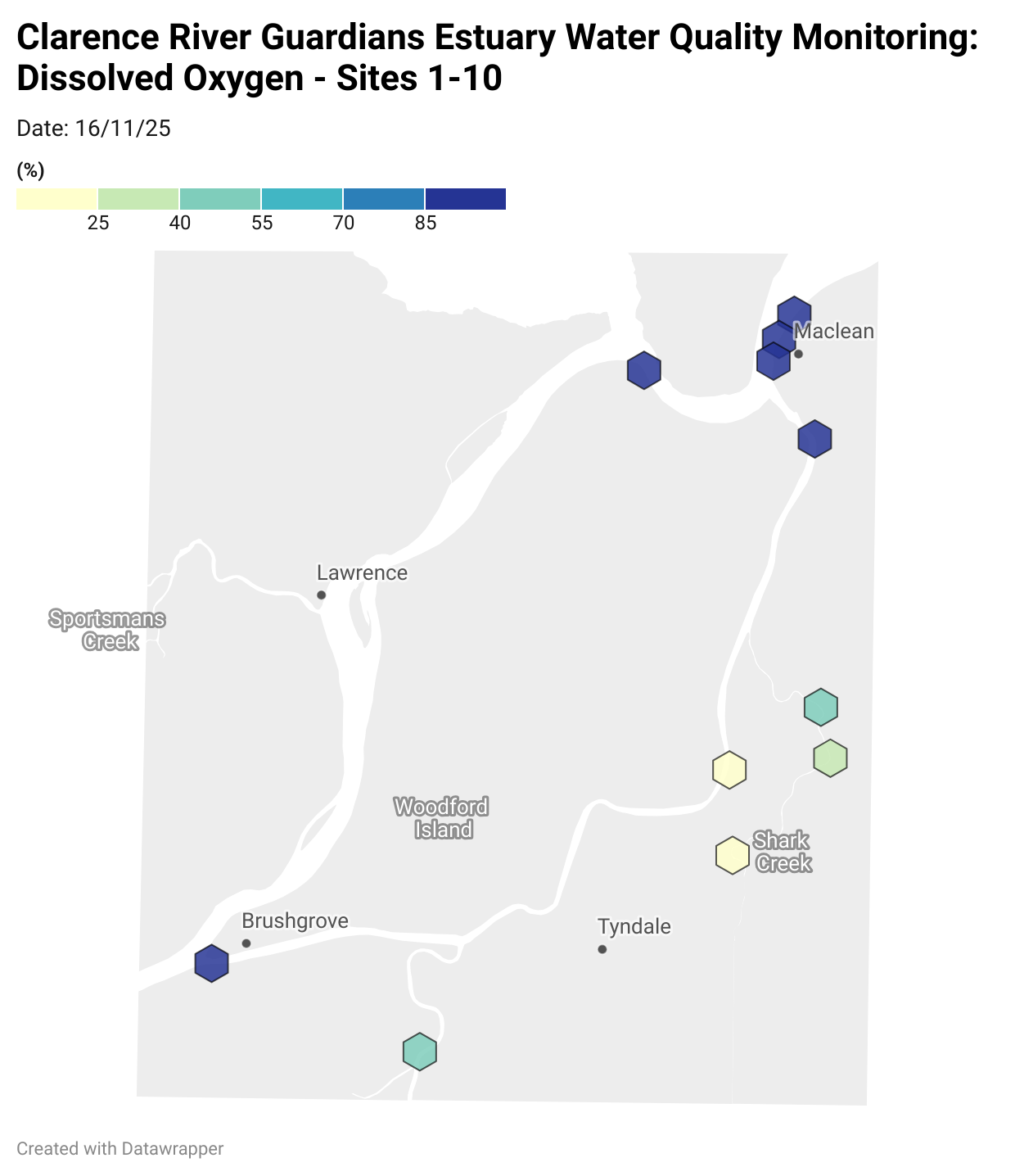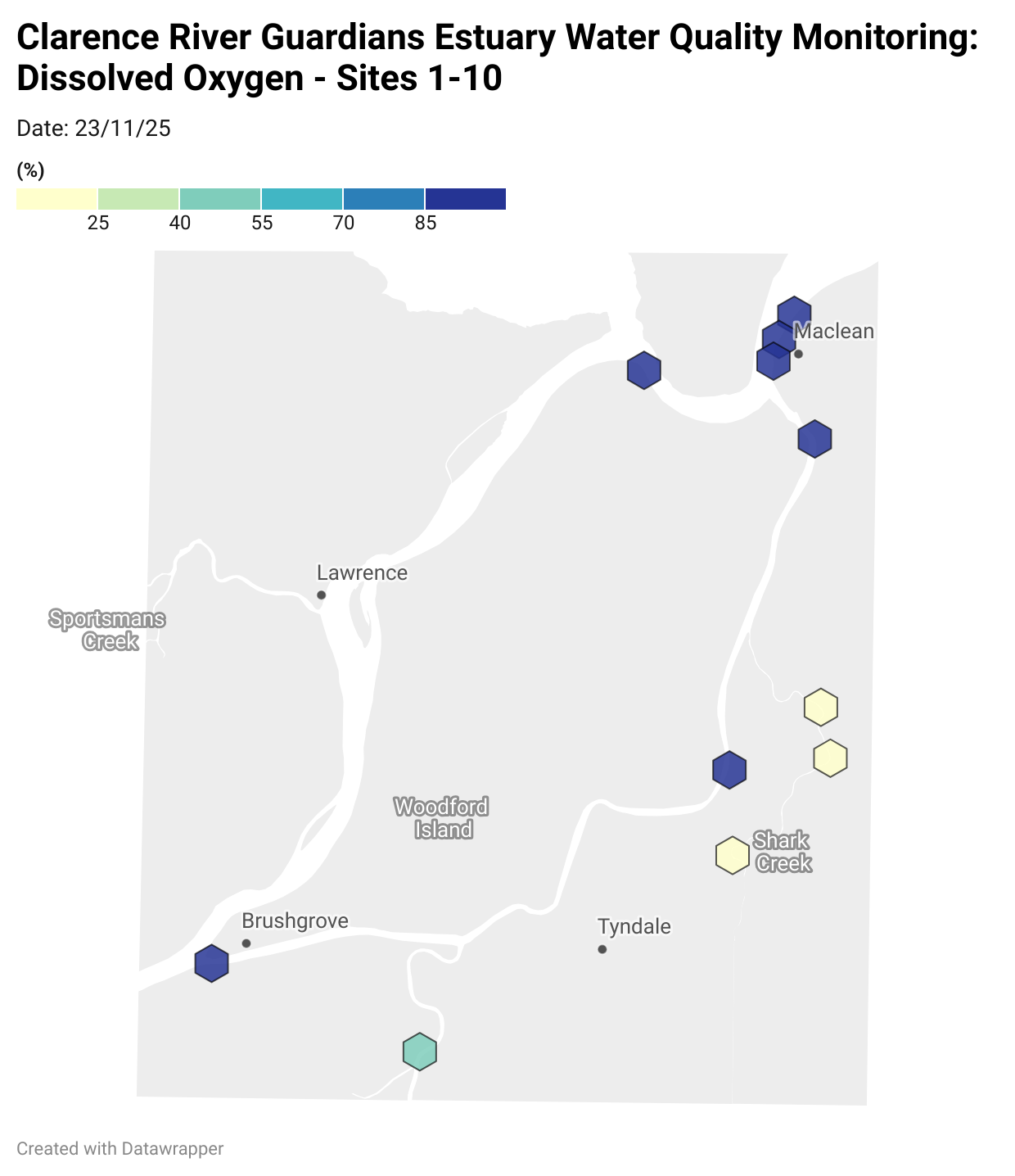Where are we monitoring?
Estuary water quality monitoring locations are shown in the map. The current focus is the middle estuary, spanning from Brushgrove (upstream) to near Maclean (downstream), and brackets the South Arm Channel, Shark Creek and the Coldstream. Monitoring occurs ~approximately weekly.
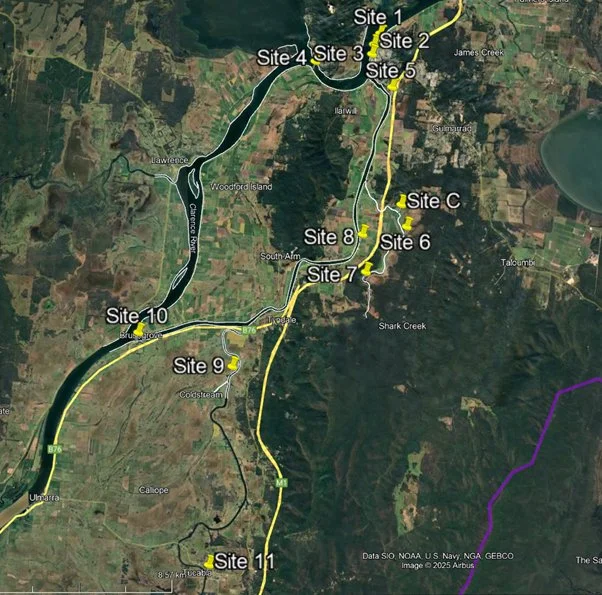
Water quality monitoring locations in the Clarence Estuary.

What are we monitoring? - Dissolved Oxygen
What it is:
Dissolved oxygen (DO) is the amount of oxygen available in the water for aquatic organisms to breathe. DO saturation is expressed as a percentage (%) of the maximum amount water can hold at a given temperature.
The amount of dissolved oxygen in water is influenced by temperature and salinity. Cold, fresh water holds more oxygen than warm, salty water.
Why it matters:
Fish, crabs, worms, molluscs, prawns and other aquatic life all need dissolved oxygen to survive.
Low oxygen levels can lead to stress or death for these organisms. Different species have different tolerance ranges.
Normal range:
In healthy estuarine waters, DO saturation is typically ~80–120%.
Critical thresholds:
Below 60%: May cause stress to sensitive species.
Below ~30%: Can lead to fish kills and dead zones.
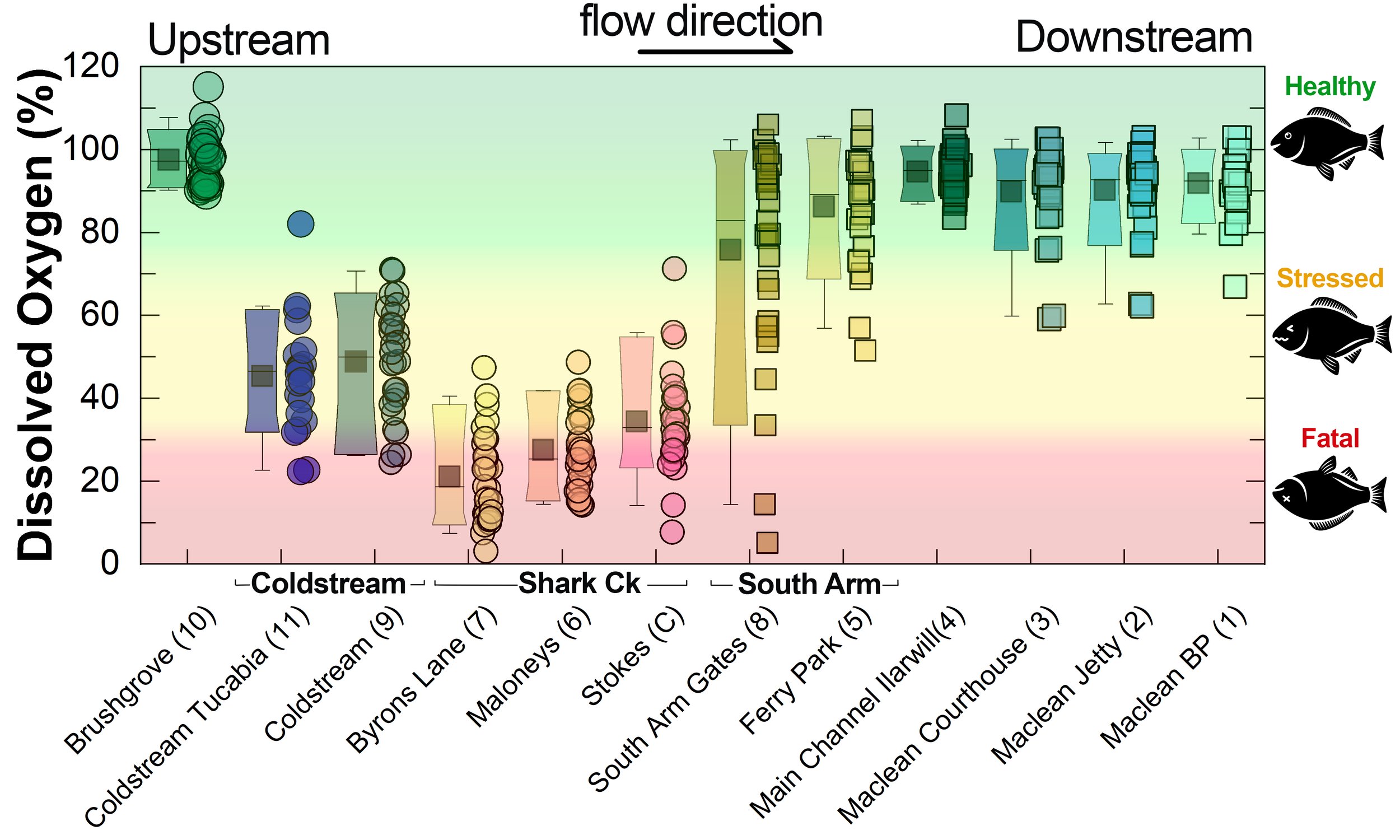
Summary of all dissolved oxygen data collected at monitoring sites from June 2025 [Updated 01/12/25].
What are we monitoring? - pH
What it is:
pH measures how acidic or basic the water is, on a scale from 0 (very acidic) to 14 (very basic). A pH of 7 is neutral. pH is in a log-scale - each pH unit decrease represents a 10x increase in acidity.
Why it matters:
Most aquatic organisms are adapted to live within a narrow pH range. Changes in pH can affect their health and the availability of nutrients and metals.
Normal range:
Estuarine waters usually have a pH between ~6.9 and 8.2.
Critical thresholds:
Below 6.5 or above 9.0: Can be harmful to aquatic life and disrupt biological processes. Different species have different tolerance ranges.
Juvenile fish, larvae and fry are generally more sensitive to low pH water.
Acidic water can cause stress and sub-lethal impacts that increase fish susceptibility to disease (i.e. redspot or EUS).
Below about pH 5.5, dissolved aluminium can become elevated in water. Dissolved aluminium can be highly toxic to aquatic organisms at very low concentrations.
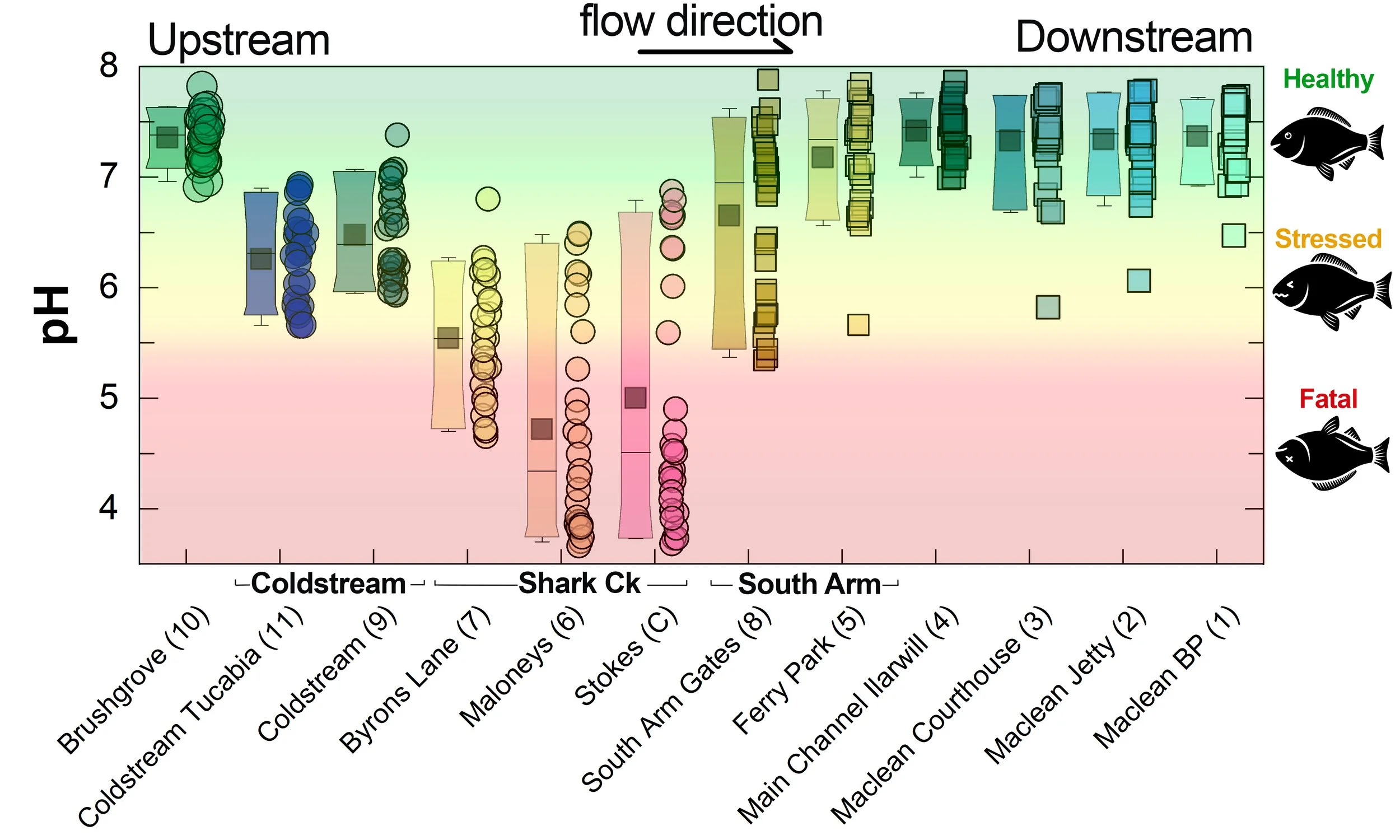
Summary of all pH data collected at monitoring sites from June 2025 [Updated 01/12/25].
Animation of changes in pH and dissolved oxygen over time at three sites (Main Channel; Coldstream; Shark Creek):
June till November 2025
Results from community water quality monitoring (pH and dissolved oxygen) in the estuary are regularly updated and displayed below.
These maps show changes over time on a colour scale - toggle through to see different dates.

